•100% online
•Immediate start
•Study anywhere
•24/7 access
•Self-paced content
•Tutor Support
•Free dashboard
•5 star reviews

IOSH, IEMA, RoSPA, IATP, IoH & CPD
approved / assured courses | 100% online
IOSH-approved courses
Environment for Business
Managing Occupational Health & Wellbeing
Managing Safely
Managing Sustainably
Safety for Executives & Directors
Safety Health & Environment for Construction Site Managers
Safety Health & Environment for Construction Workers
Working Safely
IEMA-approved courses
Environmental Sustainability Skills for Managers
Environmental Sustainability Skills for the Workforce
Pathways to Net Zero


Scan the QR code for more information
Approved training provider 980
Approved training centre Approved training provider 980
Published by Redactive Publishing Ltd
9 Dallington Street, London, EC1V 0LN
EDITOR
Joanne Perry
joanne.perry@ioshmagazine.com
DEPUTY EDITOR
Alex Lacey
CONTENT SUB-EDITORS
James Hundleby, Amy Beveridge
DIGITAL EDITOR
Kellie Williams
kellie.williams@ioshmagazine.com
DESIGNERS
Craig Bowyer, Seija Tikkis McPhail
PICTURERESEARCHER
Claire Echavarry
ADVERTISING
Display sales +44 (0) 20 7880 7613 ioshdisplay@redactive.co.uk
Recruitment sales +44 (0) 20 7880 7662 ioshjobs@redactive.co.uk
PRODUCTION
Rachel Young +44 (0) 20 7880 6209 rachel.young@redactive.co.uk
PUBLISHINGDIRECTOR
Aaron Nicholls
Redactive aims to provide authoritative and accurate information at all times. Its publications are, however, for guidance only and are not an official information source.
The inclusion of advertisements and inserts within IOSH magazine and ioshmagazine.com does not constitute an endorsement of the organisation or its products/ services by IOSH or Redactive. All advertisements must adhere to the British Code of Advertising Practice.
All rights reserved. No part of this publication may be reproduced, stored in a retrieval system or transmitted in any form or by any means, electronic, mechanical or otherwise, without the prior written consent of the publisher and editor.
For changes to your address, please contact IOSH membership team on membership@iosh.com or 0116 257 3198.
ISSN 2396-7447 © IOSH 2024
The Institution of Occupational Safety and Health (IOSH) is the world’s leading professional body for people responsible for safety and health in the workplace. IOSH magazine is printed by ISO 14001 certified printers.
Printed by
Driving forward
The ‘future of work’ is such a widely used term that it’s hard to have a professional conversation without someone mentioning it. And that future is being driven by technological advancements, climate change and other global factors.
Much of this is covered in IOSH’s new report, Towards a safe and healthy future of work, which looks at the trends impacting the world of work and examines the OSH implications. What is clear is that the OSH profession has a crucial role as we move forward, assessing and managing existing and emerging risks.
We’re fully behind our members in this quest. In the report, we make a series of calls on behalf of the profession aimed at making work safer and healthier.
That’s something we all want, of course. It’s our vision as a profession, a drive that underpins our Activate 2028 strategy. We’ve now moved into its second year of delivery, which provides an opportunity to review what we have achieved as well as to look forward.
We have continued our work to futureproof the OSH profession. We launched our new membership grades structure, providing a direct link between this and the IOSH competency framework, while we added more than 400 pieces of content to
PREDICTING WHAT THE WORLD OF WORK WILL LOOK LIKE IN YEARS TO COME IS NO EASY TASK





our award-winning Blueprint platform, bringing the total to over 1300. Our drive to ensure there is a future pipeline of OSH professionals saw us launch the IOSH Academy as a recognised study centre for the IOSH Level 6 diploma.
We held five sector group conferences, attracting around 800 attendees between them, and well over 3000 people have viewed our webinars. In addition, we’ve been present at other large-scale OSH events, with members being able to speak to us in-person at our stands and hear key updates at our theatre presentations.
Over the past year, we have continued collaborating with key global bodies, leveraging the voice of our members as we seek to influence at the highest levels. This included addressing the International Labour Conference, while our recently granted special consultative status with the United Nations Economic and Social Council opens many doors to expand the reach of our members’ voices.
We’re also excited about the start of our latest research project, involving Lancaster University and the International Commission on Occupational Health, with a focus on OSH service delivery around the world. The results will form an evidence base for our ongoing work to support members.
With so many factors influencing the future, predicting what work will look like in years to come is no easy task. It’s crucial we work together to continue to develop and put us in the best possible place to make work safe and healthy.
Vanessa Harwood-Whitcher CHIEF EXECUTIVE, IOSH
OFFICIAL MAGAZINE OF
Warners Midlands plc, The Maltings, Manor Lane, Bourne, PE10 9PH
WELCOME IOSH MAGAZINE 3 ADVERTISE WITH IOSH MAGAZINE Scan the QR code to access our media sales pack ARE YOU RECRUITING? Promote your health and safety job on the official careers site for IOSH
SAFETY,
THE KNOWLEDGE
6 THINGS YOU NEED TO KNOW
Stats and facts, news and views
10 INSIDE THE REPORTS
The OSH challenges of hybrid work, and the benefits of NHS mental health hubs
12 INTERVIEW
John Elkington unpicks climate change and systemic challenges
14 PROSECUTIONS
Recent court cases
18 THE BIG PICTURE
Salary survey highlights
20 THE WIDER VIEW
What’s new online: our latest webinars, videos and podcasts
22 CEO SERIES
Costain’s Alex Vaughan gives his take on safety and wellbeing
26 MEMBER OPINION
Dylan Jones explores the value of lagging and leading indicators
28 BUSINESS LEADER FORUM
Two new forums launched
30 ACCESS TO OSH
Shining a light on unequal OSH provision worldwide

44 MENSTRUATION AND MENOPAUSE
How can OSH professionals better support employees to create inclusive workplaces for all?
Contents
CONTENTS MAY/JUNE 2024 MAY/JUNE 2024 | IOSHMAGAZINE.COM 4
HEALTH AND WELLBEING IN THE WORLD OF WORK

THE PRACTICE
40HOW TO...
Improve AHE investigations
Finding the direct and indirect causes of adverse health events to streamline investigations
50WORKING AT HEIGHT
Heightened danger
How much of a difference can technology make to incident and fatality rates?
54CASE STUDY
A vision for zero falls
Researchers in Germany are using data on slips and trips from commercial vehicles to improve future safety outcomes
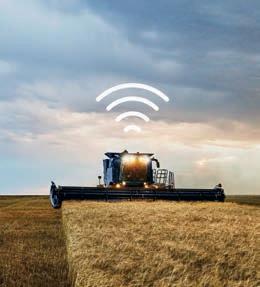
62
32 DECODING YOUR PAYSLIP
The full results of our 2024 OSH salary survey
THE EVIDENCE
7OROUNDUP
Hot topics
The latest research and reports
72DEEP DIVE Research: in depth
A closer look at two new studies
THE LAST WORD
74 PROOF POSITIVE Strength in union
IOSH member Joey Bradford has a passion for human rights and worker advocacy
THE BUSINESS
58 INFLUENCE
The art of ‘peersuasion’
How pressure to conform can result in safety failures
62 AGRICULTURE
Sowing the seeds of change
Will advanced technology lead to improved farm safety?
66 SPOTLIGHT SERIES:
EVENTS WORKERS
Behind the scenes
The OSH challenges faced by workers in the events industry

IOSH MAGAZINE 5
58 66

KNOWLEDGE


THINGS YOU NEED TO KNOW THIS ISSUE


‘Our EDI vision is clear and simple: an inclusive environment where everyone is treated fairly and feels able to participate and achieve their potential’





ZIP KRUSE, IOSH EDI LEAD MAY/JUNE 2024 | IOSHMAGAZINE.COM 6


1. EQUALITY, DIVERSITY AND INCLUSION
Report outlines action plan for improving EDI at professional bodies

A new report that draws on research from 12 professional membership and regulatory bodies, including IOSH, has outlined a series of recommendations to foster a systematic approach to equality, diversity and inclusion (EDI).
Published by The Young Foundation, Beyond buzzwords highlights the influential role that chartered, professional and regulatory bodies can have in removing barriers to EDI in the workplace.
Key recommendations
Benchmark progress against the recommendations of this


report and the Milburn report on a regular basis (eg every three years). Consider whether crossprofession development programmes can be offered (such as management skills) to assist those who are leaders to appreciate EDI issues and develop appropriate approaches. Hold each other to account: commit to a bi-annual meeting across the parties to monitor key performance indicators on a regular basis to identify areas of action and share best practice.
Read the full article and industry reaction at ioshmagazine.com/young-edi

72% experienced discrimination or exclusion
22% believe that EDI receives too much focus

2. MENTAL HEALTH
£4.58m
damages to dismissed council director left with PTSD after Grenfell
A director who was dismissed by the London Borough of Hammersmith and Fulham after taking sickness absence for post-traumatic stress disorder (PTSD) brought about by her experiences of helping people affected by the Grenfell Tower fire has been awarded £4.58m in compensation.
This case demonstrates what can happen if employers fail to address mental health and wellbeing issues or fail to make reasonable adjustments that are appropriate and necessary in the circumstances.
Read more at ioshmagazine.com/ grenfell-tribunal
3. MENOPAUSE
EHRC guidance on menopause in the workplace
The Equality and Human Rights Commission (EHRC) has published new guidance on menopause in the workplace to help employers understand their legal obligations.
Although menopause is not a protected characteristic under the Equality Act 2010, disability is. If menopause symptoms have a long-term, significant impact on a worker’s ability to carry out day-to-day activities, these symptoms could be considered a disability, and employers have a legal responsibility to safeguard these employees.
Read more on this at ioshmagazine.com/ ehrc-menopause. Also, for this issue’s in-depth article about menstruation and menopause at work, see page 44.
ISTOCK IOSH MAGAZINE 7
PHOTOGRAPHY:
7000 members across 12 professional bodies, including IOSH
at
work


Take the risk out of chemical managment with Toxic


Choose from over 45,000 products already available, or add your own.


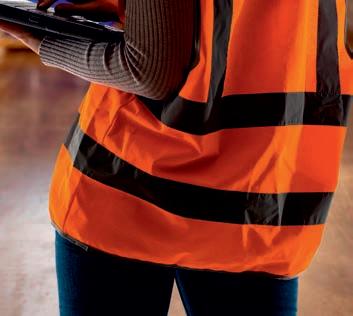
Why Toxic?


•Sensibly priced modular system - pay for what you need.
•Centralised platform - consolidate all your chemical data.
•Stay COSHH compliant - guarantee a safe working environment.
•Reduce waste - real-time visibility and control over chemical inventory levels.
BOOK A DEMO & LEARN MORE
www.toxicsoftware.co.uk
Correction
Thanks to comments and feedback from our readers regarding our article ‘Closing the asbestos knowledge gap’ in our March-April issue: we acknowledge that we should have said ‘asbestos is safe if undamaged and undisturbed’.
Divergent thinking: embracing neurodiversity at work
IOSH has published a white paper on how employers can help neurodivergent staff openly discuss their needs.
Divergent thinking: embracing neurodiversity at work comes after an online poll in late 2023 revealed that 55% of neurodivergent people had not told their current employer about their condition. Around 15% to 20% of the global population is neurodivergent.
Read the white paper: ioshmagazine. com/divergent-thinking
5. TRIBUNAL
Former AstraZeneca scientist with chronic depression wrongfully dismissed
An employment tribunal has ruled in favour of an AstraZeneca UK scientist who had an identified chronic mental health condition. James Muir was dismissed by the pharmaceutical giant after a disciplinary process considered allegations from colleagues and determined that his ‘inappropriate behaviour’ amounted to bullying and harassment.
For more on this case, see ioshmagazine.com/astrazeneca
6. IOSH NEWS
IOSH backs Pandemic Accord
IOSH has declared its support for a ‘Pandemic Accord’, a global effort to prevent future generations from reliving the pain and suffering caused by the COVID-19 pandemic, but insisted that more still needs to be done within the accord, which is still subject to intergovernmental negotiations.Organised by the World Health Organization, member states will set priorities and targets for preparations for and responses to any future pandemics, with the aim of building resilience, ensuring equitable access to measures to prevent the spread of viruses, and supporting global coordination.
IOSH says that the Accord should be aligned with key principles, including human rights, a safe and healthy working environment as a fundamental principle and right at work, and extending employment, health and social protections to all workers.
Read more about the Accord here: ioshmagazine.com/pandemic-accord

UK LONG-TERM SICKNESS FIGURES HIT NEW RECORD OF 2.8 MILLION
The number of people aged 16 to 64 years who are economically inactive due to long-term sickness in the UK has increased by 300,000 to 2.8 million. 688,000 more people out of the workforce since before the pandemic 6.6% of 16- to 64-year-olds are now economically inactive for health reasons, the highest since 1993.
108,000 working days were lost in December 2023 because of labour disputes across the UK. Health and social work reports the most days lost (Office for National Statistics, 2024).
Full analysis at ioshmagazine.com/ONS-record
Calls for action over asbestos risks
To mark Global Asbestos Awareness Week in April, IOSH renewed its call on the UK government to increase awareness of the dangers of asbestos.
‘We know that about 5000 people a year die from asbestos-related diseases every year in the UK. While the cause of their illness was likely exposure from decades ago, we believe that people are still being exposed today,’ said Ruth Wilkinson, head of policy and public affairs at IOSH.
‘This is unacceptable. What is of significant concern is the lack of consistency in managing asbestos among duty holders and a lack of awareness and knowledge about it among those who come into contact with it, particularly in smaller businesses.’
Find out more about IOSH’s call for action: ioshmagazine.com/asbestos-action
IOSH MAGAZINE 9
4. NEURODIVERSITY
THE KNOWLEDGE THINGS YOU NEED TO KNOW THIS ISSUE PHOTOGRAPHY: SHUTTERSTOCK
Inside the reports
Bridget Leathley CFIOSH explores recent OSH developments to reveal takeaways and challenges for best practice.
HYBRID WORKING
HETEROGENEITY OF HYBRID WORK
Techno stress, digital incivilities, overconnection and virtual presenteeism – all new names for old problems.
In other contexts, hybrid work could be a combination of different work types (for example, where work involves training or visiting clients), but the authors of Hybrid work: new opportunities and challenges for OSH from EU-OSHA define it more narrowly as a combination of telework (remote work involving the use of information and communication technologies) and work at an employer’s premises. Each component must take up at least 10% of the time for work to be considered ‘hybrid’.
Challenges
The report highlights the inequality of access to hybrid working by age, sector and gender, and considers the physical, temporal, technical, organisational, social, managerial and individual characteristics of hybrid working.
While contradictions in evidence are not surprising, the authors don’t highlight these inconsistencies.
For example, the authors offer evidence that some people (mostly
men) use the time saved by teleworking to do more sport, while others (mostly women) spend the extra time on domestic tasks. By contrast, we are also told that ‘telework periods of hybrid work are characterised by longer computer time, with more sedentary postures compared to on-site work’. While it is true that ‘active travel to and from work’ promotes movement, people who spend a couple of hours every day driving between their driveway and the work car park aren’t adding to their steps.
Another contradictory finding is the
suggestion that teleworking results in ‘overwork later into the night’ and sleep disorders, while also providing evidence that many homeworkers (mostly men) get more sleep.
Other issues cited as risk factors for hybrid working seem tiringly familiar, including poor planning and management of work and poor design of workplaces. Lighting and workstation ergonomics are more difficult to control for telework than officebased work. But many more concerns (such as noise or musculoskeletal disorders) fit the ‘on the one hand… on the






other’ model, demonstrating just how heterogeneous hybrid work is.
Takeaways
These risk factors should be considered in individual hybrid worker risk assessments. If you don’t have time for the full report, the headings in Table 1 (see link below) provide useful prompts for hazard identification in relation to physical, organisational, technical and psychosocial issues of hybrid working. In our enthusiasm for hybrid working, we should remember the ‘teleworkability divide’. Does hybrid working exacerbate inequalities for workers whose home set-up or work doesn’t allow them the opportunity for hybrid work? Are some staff ‘invisible’ at home when they might benefit from opportunities to mingle in the office?
To read the original report, see bit.ly/EU-OSHA-hybrid
Bridget Leathley is a freelance health and safety consultant and a health and safety trainer.

MAY/JUNE 2024 | IOSHMAGAZINE.COM 10
THE KNOWLEDGE ANALYSIS PHOTOGRAPHY: ISTOCK GETTY
BENEFITS OF NHS MENTAL HEALTH HUBS
The COVID-19 pandemic brought the mental health needs of health and care staff to the attention of the nation. In response, 40 hubs were commissioned in October 2020 so that NHS staff and care staff outside the NHS could get rapid access to mental health and wellbeing support without joining NHS waiting lists.
Challenges
Even as the pandemic faded, it was clear that workforce burnout was high, so the service continued. In March 2023, government funding for the hubs ended. Some trusts have continued to fund them, while other hubs have closed or are due to close in 2024.
Learning from NHS staff mental health and wellbeing hubs, published by the British Psychological Society (BPS), captures key learnings from the hubs and provides evidence for future needs.
A rapid literature review of existing research and data around mental health and wellbeing support for health and care provides context for other findings. The BPS used Freedom of Information requests to gather information
from the hubs, although responses were received from only 22 of the 40 hubs. A thematic analysis of the transcript of a 90-minute roundtable with six hub leads provided more detailed information on themes. Most interesting are the hub case studies described for Humber and North Yorkshire, north-west London and Northamptonshire.
Takeaways
If you are building a business case for developing a mental health and wellbeing support process in your organisation, the case studies provide data on return on investment (ROI). Scores for depression and anxiety reduced from moderate at entry to mild on discharge, and a conservative estimate was a £5 ROI for every £1 spent on the service. If wider costs are included, the ROI could be 9:1.
In building a wellbeing support process, the eight principles recommended in the report would apply at any level, in any industry:
1. System-wide ownership, including buy-in from senior leaders

2. Positive system-wide engagement
3. Independent and confidential
4. Psychologically informed, person-centred services
5. Psychologically safe, inclusive and accessible
6. Consistent, persistent promotion and outreach
7. Built-in consistent monitoring and evaluation
8. Long-term sustainable investment.
Six million sick days were recorded in 2022/23 for NHS staff due to poor mental health. Without support, these people are more
likely to leave the workforce forever. With demand for mental health support predicted to grow in 2024, if you live in England you could contact your local MP to support further investment in NHS mental health hubs.
To read the original report, see bit.ly/ BPS-NHS-mental-health
Watch a video from BPS at bit.ly/YouTube-BPS
National Wellbeing Hub in Scotland: wellbeinghub.scot Health for Health Professionals Wales: hhpwales.co.uk
IOSH MAGAZINE 11
HEALTH
MENTAL
Corporate sustainability pioneer John Elkington unpicks the
Gordian knot of climate change and solutions to interlinking systemic challenges.
WORDS MATT LAMY
‘S
o many of the crises we face are now ferociously interlinked,’ John Elkington says. ‘The World Economic Forum does an annual mapping of the risks facing humanity and last year it looked like a Gordian knot, everything reinforcing problems in systems elsewhere. For example, while we face the climate emergency, it is also cascading through other issues around biodiversity, soil health, loss of coral reefs, movement of fisheries to cooler waters and the overall shrinkage of fishing areas.’
John’s 50-year professional career has been largely focused on corporate sustainability, where he has advised some of the biggest companies in the world about the effect that their business has on society and the environment. The Gordian knot of which he speaks now goes well beyond the environmental concerns like climate to include elements more directly relevant to IOSH members.
Systemic solutions
‘For health and safety, one of the big issues will be the warming of cities,’ says John, founding partner and ‘chief pollinator’ of think tank and advisory firm Volans.
‘One of the groups that I am involved with in the US, the Smart Surfaces Coalition, uses everything from tree planting and green roofs through to reflective surfaces on car parks and pavements to begin to moderate the temperatures that are creating urban

Preparing for a knotty future
12 MAY/JUNE 2024 | IOSHMAGAZINE.COM
THE KNOWLEDGE INTERVIEW
pressure cookers – with poorer areas hardest hit. The obvious solution is often just to install an air conditioning unit, but that simply moves the problem elsewhere.
‘Even outside cities, in places like India, the temperatures are starting to approach points at which human beings simply cannot live. If your job is in agriculture, working in fields, this is a nightmare trajectory.
‘Typically, and sensibly, health and safety as a profession has tended to focus on incremental improvements in the working environment. The problem with that approach – although it is necessary and it can be helpful – is that so many challenges we now face are systemic. They cannot be solved with incremental solutions. While there is a clear and hugely important role for health and safety people, increasingly this must become a system design issue. The focus must be on areas like economics – what things do we value and how do we put a price on them?’
Exponential elements
The notion of exponential rather than incremental solutions is something that John has started to promote more energetically in recent years. As he says, in the OSH sector, such concepts might seem slightly alien, although the concept of ‘zero accidents’ is proof that radical approaches aren’t unprecedented.
‘There are actually two things going on here. About 10 years ago, I wrote a book called The Zeronauts, in which I looked at all the ways that professionals in different sectors of the economy could increasingly drive towards zero. Zero accidents is fundamental to that, as are net zero carbon emissions,’ John says.
John sees many of the challenges confronting us now as exponential ones: from the growth of human populations, the enlargement of cities and spread of consumerist lifestyles, to the adoption of technology based on use of fossil fuels and the destruction of natural habitats.
‘We’re trying to address those exponential problems with incremental thinking and approaches,’ he says. ‘That simply cannot work. The saving grace, potentially at least, is that most of the technologies that we are now evolving are digital – and anything that is digital can evolve exponentially. We’re thinking a lot at the moment of artificial intelligence, and the power of AI systems is evolving exponentially.
The question is: how do we manage that? How do we ensure that the technologies that we adopt, for example in AI, don’t cause more problems than they solve?’
And what is the role of health and safety there? ‘Historically, my sense is that health and safety people tend to come into these big challenges relatively late in the day,
THE FOCUS MUST BE ON AREAS LIKE ECONOMICS – WHAT THINGS DO WE VALUE AND HOW DO WE PUT A PRICE ON THEM?
in a sort of emergency service role,’ says John. ‘Instead, health and safety needs to be involved in proactively thinking through what the challenges and issues are likely to be and heading them off at the pass.’
Health and safety hypocrisy
Getting health and safety messages through to senior management can be an uphill struggle, though, John explains.
‘If you look inside a given company at the degree to which health and safety messages get through to senior management, it’s extraordinary how long it can take for the professionals who see the problem to wake up the people who are making the decisions that aggravate those problems,’ he says.
‘Encouragingly, however, questions of health, safety, environment and quality
are popping up on the radar screens of top teams and boards. The bigger issue is that those same businesses are actively involved in advocacy, in lobbying, very often to stall or divert the adoption of new regulation and new market controls and standards.’
It’s time, John believes, to start asking some difficult questions. ‘One highly uncomfortable question that companies doing sustainability reporting – in some cases for decades – are now being asked is: what about your lobbying stance on climate-related issues? That can be very sensitive and painful for companies because they don’t want to think about what their industry associations or federations are doing on their behalf. They must.’
AI ascendant
Fundamental to all of this, John believes, is the adoption of AI. ‘We have started to see all sorts of applications of AI, especially in healthcare areas, but it will fan out from that very rapidly. In areas like renewable energy, a lot of technology is digitally controlled, designed and operated: smart grids and electric vehicles. All this is increasingly digital and, whether we like it or not, technologies that we are evolving are themselves developing exponentially,’ John explains.
While it might be easier for companies to think about close-to-home health and safety risks, it’s important to consider the impact on the wider world, John says. AI is ‘incredibly necessary’ as it can observe and process third and fourth order issues in a way the human brain finds difficult.
‘We need technological support,’ John adds. ‘But then the question to health and safety folk is: how advanced are you on the adoption curve for things like expert systems and AI? I’m sure in certain high-risk sectors, the answer will be quite far advanced.
‘But my hunch is that many people in the professions served by IOSH will be lower down the learning and adoption curves than they perhaps should be.’
IOSH MAGAZINE 13
PHOTOGRAPHY: GETTY
World’s fourthlargest chemicals company failed to undertake risk assessment
THE STORY
Ineos Chemicals, the fourth-largest chemical company in the world, has been fined £400,000 for failing to undertake a risk assessment. The failings emerged after a worker fell into a sump of caustic hydroxide at a site in Grangemouth, Scotland and was seriously injured.
THE INCIDENT
The 47-year-old was clearing the tank containing the caustic solution, which had reached the high-level design threshold the day before.
After laying out various hoses in preparation for emptying the sump, the worker then entered the sump area. He stepped onto the corner of the grating, but it gave way. His right leg fell into the sump and was submerged in the solution for three seconds before he managed to pull himself out. The worker sustained permanent scarring.
THE FAILINGS
Investigators found that Ineos failed to undertake a risk assessment of the work involved. There was also no safe system of work in place. The grating was not secured and no barriers were in place to prevent a fall into the sump.

LESSONS LEARNED
Guidance on risk assessments states that employers, or an appointed competent person, must identify hazards before work takes place, before assessing and controlling the risks involved. Findings should then be recorded, with employers urged to review the control measures they have implemented to ensure that they are working.

YOUNG WORKER CRUSHED TO DEATH WHILE PUTTING UP WARNING SIGNS ON CONSTRUCTION SITE
A building firm has been fined £133,000 and ordered to pay £8500 in prosecution costs after a 22-year-old worker was crushed to death by an excavator.
James Rourke had only been working for Materials Movement for a few months when the vehicle struck him, causing catastrophic injuries.
The firm had been hired to undertake ground clearance works in Hertfordshire, south-east England, in preparation for the building of new houses.
In November 2019, site engineer James had been attaching warning signs to fencing around the site when the incident occurred.
Find out what the investigating inspector said: ioshmagazine.com/INEOS-hydroxide
Investigators revealed that Materials Movement had failed to plan and manage the work, and to properly supervise the work that James and the excavator driver were undertaking to ensure it was safe. It also failed to ensure that the work was planned and managed to eliminate any chance of James working near the excavator.
CHEMICALS IN BRIEF THE KNOWLEDGE PROSECUTIONS MAY/JUNE 2024 | IOSHMAGAZINE.COM 14
PHOTOGRAPHY: HSE



ADVERTISEMENT FEATURE
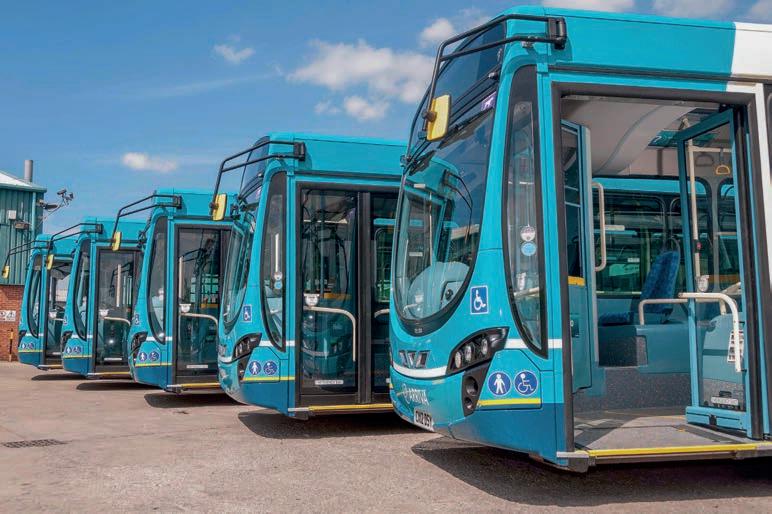
WORKPLACE TRANSPORT
ARRIVA AND CLEANING FIRM FAILED TO SEGREGATE PEDESTRIANS AT BUS DEPOT
What’s the story?
UK bus operator Arriva and a cleaning firm have been prosecuted after a worker was killed at a bus depot by a reversing vehicle.
What happened?
Albin Trstena, an employee of Cordant Cleaning (also known as CLC Realisations), was working in the yard of Arriva’s Hemel Hempstead bus depot in November 2019 when a vehicle reversed out of the wash-down area. The 25-yearold was struck and sustained fatal injuries.
Why did it happen?
The two companies failed to properly consider who was responsible for determining and implementing suitable measures to ensure safe working practices when contracting out some of the activities performed within a shared workplace. Both organisations have been fined.
What did investigators find?
St Albans Magistrates’ Court was told that Arriva and CLC Realisations failed to assess the risk involving vehicle-pedestrian conflict adequately and did not implement an appropriate system of work to manage this risk.
Investigators also found inadequate measures to safeguard pedestrians from moving vehicles at the depot and proper utilisation of walkways within the yard.
What happened in court?
CLC Realisations, which is in administration, did not enter a plea but was convicted of breaching section 2(1) of the Health and Safety at Work Act, resulting in a £1000 fine.
Arriva Kent Thameside pleaded guilty to breaching section 3(1) of the Health and Safety at Work Act in that it failed the manage the safety of those not in its employment. It was ordered to pay £32,000 in fines and £22,392 prosecution costs.
THE KNOWLEDGE PROSECUTIONS PHOTOGRAPHY: ALAMY HSE MAY/JUNE 2024 | IOSHMAGAZINE.COM 16
CONSTRUCTION
‘NOTHING IN PLACE TO PREVENT ENTRY INTO DANGER ZONE’ AS WORKER STRUCK ON HEAD AND KILLED BY 16-TONNE EXCAVATOR
A construction company has been prosecuted for health and safety failings after a worker was struck on the head and killed by a 16-tonne excavator.
Dean Myers, who worked for HACS Construction, was undertaking groundwork activities in a partially excavated trench at a site in North Yorkshire, England.
The groundworks team was preparing the trench for the laying of new drainage when Dean moved to the foot of an existing manhole directly adjacent to the trench.
With nothing in place to prevent his entry into the danger zone of the excavator, the 56-year-old exited the manhole via a makeshift opening to investigate. However, the excavator driver and other workers were not able to see that he had entered the danger zone. When the excavator met resistance while digging, the moving bucket swung
into him. It struck him on the head, causing catastrophic injuries. He was pronounced dead at the scene.
HACS Construction had failed to identify or assess the risk arising from using the existing manhole chamber as an improvised refuge. This meant that the company failed to implement a system whereby workers were prevented from entering the dangerous working zone of the excavator while the machine was being operated by a driver with limited sight.
There was also inadequate supervision on site, alongside a failure to carry out any monitoring visits that would have identified crucial safety failings.
HACS Construction pleaded guilty to breaching section 2(1) of the Health and Safety at Work Act. At Leeds Magistrates’ Court, the company was fined £330,500 and ordered to pay £9141 in prosecution costs.

AROUND THE GLOBE
AMAZON FRANCE LOGISTIQUE FINED €32M OVER ‘EXCESSIVELY INTRUSIVE’ SYSTEM FOR MONITORING EMPLOYEES
The French Data Protection Authority (CNIL) has fined Amazon France Logistique (AFL) €32m over its ‘excessively intrusive’ system for monitoring employee activity.
The French authority undertook investigations into AFL’s practices in its warehouses after being alerted by articles in the press and receiving some complaints from employees.
Each warehouse employee is supplied with a scanner to document the performance of tasks assigned to them in real time. When they scan tasks, this data is recorded and then stored. The data is also used to calculate indicators of quality, productivity and periods of inactivity of each employee.
However, in its ruling in December, the CNIL said that it was illegal for the business to set up a system that measured work interruptions with such accuracy, as this potentially required ‘employees to justify every break or interruption’.
The authority cited AFL’s ‘idle time’ indicator, which signals periods of scanner downtime of 10 minutes or more, as well as its ‘latency under 10 minutes’ indicator, which signals periods between one and 10 minutes.
It also said that the system for measuring the speed at which items were scanned was ‘excessive’.
The authority also considered that it was ‘excessive’ for AFL to keep all the data collected, as well as the resulting statistical indicators, for all employees and temporary workers, for 31 days.
More on
at ioshmagazine.com/amazon-france
this story
IOSH MAGAZINE 17
HIGHLIGHTS FROM OUR 2024 SALARY SURVEY
A total of 2725 health and safety practitioners completed our survey, helping us to build a picture of the profession in 2024. Here, we present the key findings.
IOSH members have higher salaries than non-members: £50,000 for Certified Members and £59,000 for Chartered Members, compared with £40,000 for non-members
To read our analysis of the results in full, see page 32
THE AVERAGE RESPONDENT
45 to 54 years old (32.4%)
Male (69.5%)
Based in the UK (94%)
Certified or Chartered Member (29% and 28.7%)
NEBOSH certified (68.1%)
Earns £50,000
ILLUSTRATIONS: SHUTTERSTOCK
THE KNOWLEDGE SALARY SURVEY SNAPSHOT MAY/JUNE 2024 | IOSHMAGAZINE.COM 18
20% have access to a finalsalary pension
IN 12 MONTHS
Most respondents (28.8%) have not received a pay increase over the past year



Among respondents who have received a pay rise, the median increase is


60% have five years or fewer in their current role


27.5% of respondents have a company car










Corporate purpose is the lowest motivational factor for respondents
18%




62%

benefit from hybrid or flexible work arrangements
Most are motivated by salary (63.6%), flexible or hybrid working (45.4%) and job security (44%)
hasThegenderpaygapamongrespondents increasedto£5000sinceourlastsurvey
+150%
IOSH MAGAZINE 19
The wider view
Listen
FUTURE LEADERS
The IOSH Future Leaders Steering Group has been actively involved in IOSH podcast since its launch two years ago. Listen to members talking about navigating difficult situations, leading with intent, women in safety and overcoming impostor syndrome, plus lots more at ioshmagazine.com/ podcast/ futureleaders
NEW CEO SERIES
IOSH president Stuart Hughes has launched a new IOSH podcast series, in which he interviews global business leaders to provide insights for members of IOSH who often don’t get to hear the view from the top. With a focus on employee care, these interviews discuss how to communicate with the board and how to identify
IOSH PODCAST ON THE WORLD STAGE
The entire series of exclusive IOSH magazine interviews, recorded at the 23rd World Congress on Safety and Health at Work in Sydney, Australia, is available to listen to now. Experts from the ILO, ISSA and the Ministry of Manpower in Singapore share their insights on evidence-based risk management, the
opportunities for OSH people to develop.
‘It’s a great way for IOSH members to hear from the leaders of organisations what they need from their safety teams,’ said Stuart at the launch. ‘I hope to establish what they need – and what they get – so that we can start to identify any potential



challenges of global supply chains, job design that promotes worker wellbeing and much more.
Listen to all the episodes: ioshmagazine.com/ podcast/congress Watch exclusive clips here ioshmagazine.com/ video/congress
Never miss an episode of IOSH podcast: subscribe at podcast.ioshmagazine.com

gaps in alignment, empower our members to ensure their messages land with CEOs, and help leaders in their decision making concerning OSH.’
Stuart’s first interview is with Alex Vaughan, CEO of construction giant Costain.

Listen to the conversation ioshmagazine.com/ podcast/ceo/costain
Three



COMING UP
lines of defence: maximising your
OSH

management system
IOSH magazine is hosting a one-hour webinar in partnership with Ideagen in May, looking at maximising the effectiveness of OSH management systems for continuous improvement.
Using real-world case studies, our panel of health and safety experts, which includes IOSH’s thought leadership manager, Dr Chris Davis, will illustrate how adopting the ‘three lines of defence’ model can strengthen risk management practices and protect against emerging risks.
Join this session to learn how an implementation and adoption framework can foster and improve risk control culture, and boost employee empowerment, accountability and stakeholder confidence. Those who join will earn one hour’s worth of CPD.
Register for your free place: ioshmagazine.com/webinars/ ideagen/three-lines

MAY/JUNE 2024 | IOSHMAGAZINE.COM 20 THE KNOWLEDGE ON THE WEB
Watch
5000 downloads of our Future Leaders series
ON DEMAND
Breathe easy: respiratory protective equipment fundamentals
Led by 3M’s respiratory protection specialist George Elliott, this webinar covered essential topics to help members to create a robust and effective respiratory protection programme. Members said it gave them a deeper understanding of:
• Identifying the need for respiratory protection
• Selecting the most suitable and adequate respiratory protection, including deciphering common terminology and demystifying protection factors
• Conducting respiratory fit testing
• Managing respiratory protective equipment on an ongoing basis, including training, occupational health considerations, record-keeping, and care and maintenance.
Watch the webinar on demand at ioshmagazine.com/webinars/3M-RPE

From symptoms to root cause analysis: using visual AI to address top OSH challenges
IOSH magazine recently partnered with artificial intelligence experts SparkCognition to deliver a webinar exploring how visual AI can address the root cause of health and safety challenges and create a gold standard for improvement.
If you missed it, you can watch it back at ioshmagazine.com/webinars/spark-ai
Watch all the webinars and earn CPD points at ioshmagazine.com/webinars
CAREERS ADVICE & GUIDANCE





Have you checked out the recently launched IOSHJobs Advice Hub? From becoming a health and safety apprentice to choosing occupational safety and health as a second career, and everything in between, we’ve got dozens of articles that offer advice and guidance to members at every career stage. Here’s a selection of recent articles:

Build your career using a professional register Being visible to recruiters and businesses online has become an essential part of finding and maintaining work in the OSH profession.
Which health and safety qualification should I get?
Whether you’re just starting out in OSH or looking to change the direction of your career, you’ll probably need a relevant qualification.
Apprentices: sharpen up your communication skills How to articulate your real-life experience to potential employers, prove your reliability and land a new job.
Read all the articles at ioshjobs.com/ careers and if the salary survey findings in our cover story on page 32 whet your appetite to consider a career move, why not check out the latest vacancies in your area while you’re there?
Read Stay up to date
Do you receive our award-winning weekly eNewsletter? Packed with the latest news, insight and legislative updates, almost 50,000 members and nonmembers read our eNewsletter every week. Don’t miss out – sign up for free today. ioshmagazine.com/newsletter
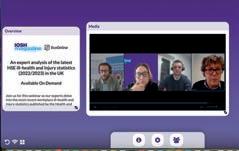

A recent IOSH magazine event saw an expert panel analysing the GB Health and Safety Executive’s ill health and injury statistics, and it drew in thousands of health and safety professionals. We were inundated with questions, such as:
QEmployees are not reporting accidents or incidents to build up statistics for analysis and trends. How can I improve the reporting performance?
Q Are we really getting better at preventing occupational ill health and injury, or is it being masked by better reporting and the quality of reporting?
QMental health is becoming a big issue in the workplace, so what are your suggestions to reduce the risk of a person suffering while at work? Are mental health first aiders enough?
Read all the answers from our expert panel at ioshmagazine.com/QA-HSE-stats
Download our digital edition
Did you know you can download this issue of IOSH magazine? Read your members’ publication anywhere, any time. And that’s not all – you can also access our issue archive. Four years, 32 issues, hundreds of features and thousands of words are available to browse. Read individual articles or download entire PDFs of each issue.
ioshmagazine.com/issue-archive

IOSH MAGAZINE 21
Webinars 2000 average registrations per webinar ce ng s
Caring in construction
In the first of our new series of CEO interviews, Costain’s Alex Vaughan tells IOSH president Stuart Hughes that he takes safety and wellbeing personally, and this drives his need to eliminate harm wherever he can.
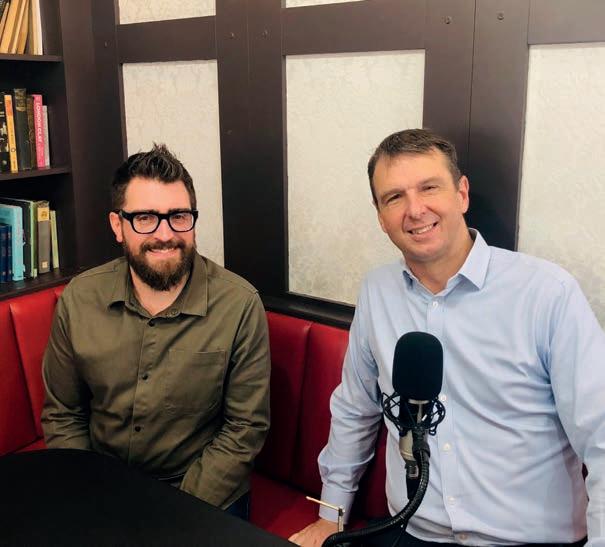


I see a lot on LinkedIn about people at the top not caring about the workforce. Within your organisation, how do you demonstrate care?
It’s really simple. People are our biggest asset. We want to look after them, unlock their talent and create an environment they can thrive in. Take how we approach people working at home. We know it can help people’s work/life balance, and their wellbeing, so we deliberately haven’t mandated anything. Instead, we’ve empowered our people and said: ‘Make your decisions based on what works for you, for the team and your customer.’ I take wellbeing and safety personally, and the reason for that is I’ve been affected by both. I had a family challenge around wellbeing that frightened me, and I want to make sure no other family goes through that. And in my professional life, I’ve spoken with a family whose son sadly lost his life at one of our sites. I never want any families or friends to feel like that.
Dealing with death at a site must be really challenging. As the leader of an organisation, how do you prepare for that?
The best preparation is to do everything you can to prevent it happening in the first
22 MAY/JUNE 2024 | IOSHMAGAZINE.COM THE KNOWLEDGE CEO INTERVIEW
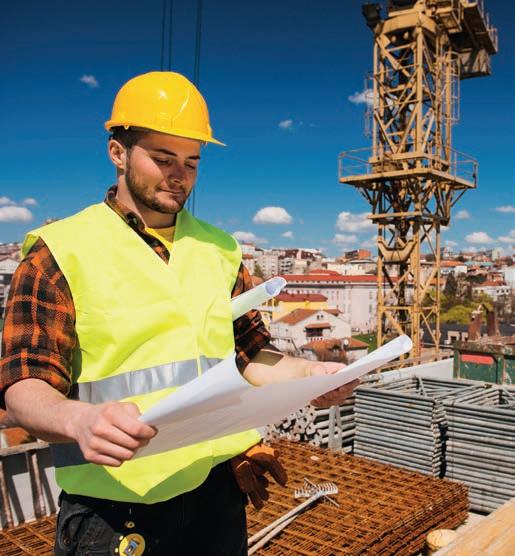
place. But we did have a fatality on one of our contracts in 2022. I got the phone call, and I went straight to the project – not to get involved, but just to be there to support the team. My job in that moment was to make sure I was helping to look after the people who were hurting very badly.
When we select leaders across the business, we look for people who care. That simple attribute will help to prevent accidents in the first place and stand them in good stead if the worst should happen.
We owe an obligation to people that we lose along the way to make sure we don’t have repeat incidents. In view of that, how does health and safety get a seat at the top table?
I am ultimately responsible for health and safety at Costain but our group safety, health and environment [SHE] director also sits on our executive committee. It’s vital there’s a voice at the top table that gives leaders direct and challenging feedback and
PROFILE
Alex Vaughan
• 33 years at Costain
• Five years as CEO
• Three years as group HR director
Costain
• UK infrastructure company working across transportation, energy, water and defence
• Major projects: HS2 and the Channel Tunnel
• 4000 workers
• 300 health and safety professionals
WHEN WE SELECT LEADERS ACROSS THE BUSINESS, WE LOOK FOR PEOPLE WHO CARE – THAT SIMPLE ATTRIBUTE WILL HELP TO PREVENT ACCIDENTS IN THE FIRST PLACE
ensures we are focusing on the right areas. Fundamentally, every single person who sits around the executive committee has got to take SHE seriously and set an example to all of our people. That’s absolutely critical for me.
In total, you employ more than 300 health and safety professionals in your organisation. What is it that you need from them?
I need our health and safety people to bring independence and be that critical friend to help everyone in the business make the right decisions. We really value the expertise across our health and wellbeing professionals, our safety professionals, our environmental professionals – they’re an integral part of the team and crucial to being successful.
Is it your natural style to talk about OSH in terms of experience and shared understanding?
The power of storytelling is so strong. If you ask people about statistics, I think a lot of people will be unsure. But if you ask them to share a story, every hand will go up. Sometimes statistics mask the reality and make it less meaningful, less powerful. We can measure accident frequency ratios, but a number of 0.04 – what does that actually mean to people? If we talk about the impact of incidents on individuals or teams, that’s much more powerful and gives everyone a drive to continually improve and make things better.
IOSH MAGAZINE 23
PHOTOGRAPHY: SHUTTERSTOCK










40% of industrial accidents are related to substance








































SureSwab Rapid is an easy-to-use screening device to detect multiple drug parameters in

Rapid collection time
Indicator to display sponge is fully saturated Slimline design for easy transportation or storage




It is easier to perform the test for more consistent screening, along with providing a quick negative
programme for employees. SureSwab Rapid is a simple solution for a wide range of industries and drug testing scenarios.




Test 6 parameters simultaneously:

Amphetamines
Cocaine


Benzodiazepines




Methamphetamines
Cannabis Opiates



+44 (0)1332 365318
info@surescreen.com
Scan the QR code to learn more about SureScreen’s drug & alcohol testing
CONTACT US
What are the areas that worry you as a leader, and why?
When our SHE director’s number comes up on my mobile, my heart always misses a beat. But that’s the right reaction. You can never, ever, take your foot off the floor in terms of doing everything you can to keep people safe. I think the industry is facing a huge challenge around health and wellbeing. There can be a lot of pressure on people across different parts of their lives and we care deeply about the people who work for us. So we want to give them the best support and advice that we can.
And the message is getting across. I was visiting a project recently and one of the questions I was asked was: ‘What are you doing about your own wellbeing?’
I replied that since Christmas I’ve been making sure I finish work on time so I can go to the gym three times a week. It can be difficult to get that work/life balance right, but it is important.
you’re holding it back, that’s a lot of responsibility on the individual. Have you done anything around empowering people?
As part of the induction for every single person when they join the business or when they join a project, they’re given a card signed by the managing director responsible for that division. The card says: ‘You have my authority, that if you feel anything is unsafe, or is a risk, to stop it.’ It’s about having a culture of empowerment around safety, and we do everything we can to make sure people understand that.
I NEED OUR HEALTH AND SAFETY PEOPLE TO BRING INDEPENDENCE AND BE THAT CRITICAL FRIEND TO HELP EVERYONE IN THE BUSINESS MAKE THE RIGHT DECISIONS
Can you give examples of what you’re doing in the health and wellbeing space?
We have more than 400 mental health first aiders at Costain and all our leaders go through health and wellbeing training. We also have a great employee assistance programme, which is a free, 24-hour confidential helpline that can provide advice on a whole range of topics, such as family issues, stress or anxiety, and bereavement. Something I’m also very proud of is Costain’s association with Samaritans, who visit our people and our projects and whom we’ve supported through fundraising activities.
If there’s a £10m project and, as a health and safety professional,
Sometimes people can be intimidated about the idea of talking to people at the very top of organisations. How have you narrowed the gap?
I think it helps having come up through the organisation. When I go out to every single project, I always make myself available, talk to people, and have an open Q&A where people can ask me absolutely anything they like.
I also have a virtual coffee with teams – in today’s world, we can do that quite easily. I’ll have half an hour and we’ll just talk. I think you’ll find most leaders would welcome the opportunity to chat in this way. They might not have consciously thought of doing it, but if a team emails them and says, ‘If you’ve got half an hour, we’d love to hear from you and we’d also like to share what we’re doing,’ I think they would get a really positive response.
To hear the full interview with Alex Vaughan, visit ioshmagazine.com/ podcast/costain. Or watch the video at: ioshmagazine.com/video/costain
WISE WORDS
On good advice: An ex-chairman of the company once said to me: ‘When you look at your next career opportunity, don’t think about it as the destination –think of it as part of the journey, and what are you going to learn in that role in terms of where you want to get to.’
On bad advice: Someone once said to me: ‘Don’t go changing what you’re going to do in your career – you’re a commercial person, stick to being a commercial person.’
On books: I recommend Black Box Thinking by Matthew Syed. It talks about how, if you’re focused on control and you shut other people out, you miss an opportunity to avoid problems. It’s all about inclusive thinking.
On learning through failure: I was lucky enough to do the advanced management programme at Harvard Business School. The programme is designed so that you have to work in groups, but I was determined to be across every single case – to have read and researched them all. And I ended up getting ill and being treated in hospital because I was exhausted.
The course tutor came to see me, and he said: ‘We designed this course to stop you covering everything.’ And since then, I’ve changed my whole working practice to make sure that I focus on what I need to focus on and empower others to do everything else.’
IOSH MAGAZINE 25
THE KNOWLEDGE CEO INTERVIEW
Focusing on lagging indicators is like driving a car looking only in the rear-view mirror. You need to look at leading indicators to see what is ahead of you. Yet, so often organisations focus on lagging indicators such as accident rates and lost time accident rates. When used correctly, leading indicators can enable organisations to positively shape their future. A proactive focus on manager safety observations, conversations on the shop floor, staff training and workplace inspections can make a difference. It
can also foster an improved safety culture and make employees feel valued. Winning employees’ hearts and minds is intangible to measure but is tremendously powerful for all business objectives, including safety performance.
Looking at the details
Leading indicators are often measured during internal audits at each branch or unit in an organisation. An issue can be that many subsidiary items covered in an audit do not truly impact lagging indicators. This can cloud branch/unit performance on key leading indicators. The danger of too many audit questions is that the key leading indicators are only briefly looked at. A branch/unit could just be ‘ticking a box’ for crucial indicators but this is not seen in an audit.
LEADING PLUS LAGGING









How can OSH professionals use these two types of indicators together for a fully rounded view of safety?
WORDS DYLAN
JONES CMIOSH, ROYAL MAIL
SAFETY ADVISOR
AND IOSH FUTURE LEADERS STEERING GROUP MEMBER.
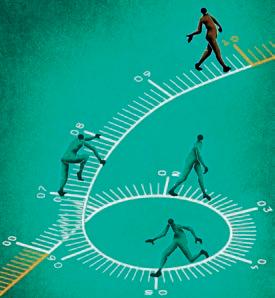
is there evidence that some issues have been missed?
on leading indicators for years if the lagging indicators never improve. This can discourage operations managers from recording leading indicators because they don’t see how they impact on accidents. Instead, they focus on lagging indicators. This can lead to punitive sanctions on employees and fear of reporting accidents due to reprisals.
Organisations should compare branch/ unit data against leading indicators six months ago with lagging indicators today. Are the units that have been meeting leading measure targets for months now seeing improvements in lagging indicators? If not, there needs to be another review of the leading indicators used. What were the units with good lagging indicators today doing six months ago?
Safety reality
A better approach would be to focus in detail on key leading indicators. Are managers on the shop floor at the busiest times, when previous accidents have occurred? Are they having challenging conversations about unsafe acts? Are they talking about risks that caused previous accidents? Are all relevant topics being discussed at safety committee meetings? Are workplace inspections thorough, or
Test staff knowledge on training: do they really understand a topic, or have they just signed that they have read it? This ensures that key leading indicators have been completed in detail, maximising their potential to impact future lagging indicators.
Are leading indicators effective?
It’s important to test leading indicators to check if they are impacting lagging indicators. It’s pointless to focus solely
By focusing on fewer leading indicators and ensuring that they positively influence lagging indicators, it’s easier to persuade operations managers of their importance. Instead of leading indicators being safety theory, they become reality. It’s then easier to promote the positive impacts or an improved safety culture.
Organisations need a proactive focus on leading indicators while looking retrospectively at lagging indicators to keep a check on reality.
ILLUSTRATION: IKON
THE KNOWLEDGE MEMBER OPINION
MAY/JUNE 2024 | IOSHMAGAZINE.COM 26


















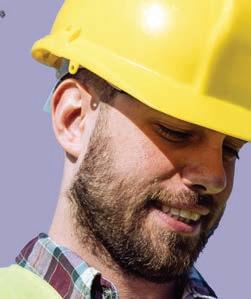
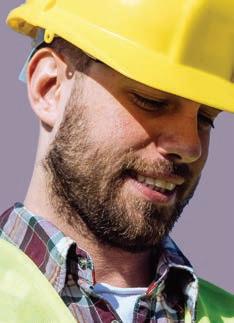
































































































Registered Charity No. 1097271 and OSHCR No. SC037998. MC242 Find out more: T. +44 (0)20 3510 3510 www.britsafe.org Committed to driving change and enabling organisations to thrive
Something to shout about
WORDS ANGELA GRAY
IOSH is amplifying the voice of business with two new discussion forums to add strategic and technical value for OSH professionals.
The IOSH for Business team champions the role of occupational safety and health in social sustainability to drive business success. We have launched IOSH for Business to create a ‘voice of business’, aligning a language and common narrative and amplifying how OSH impacts the bottom line. IOSH for Business helps organisations of every size accelerate their OSH strategy.
In the January/February issue, we introduced you to the Business Leader Forum (BLF), and in the March/April issue we shared some valuable insights from discussions with the group regarding the challenges of businesses meeting and reporting against the United Nations’ Sustainable Development Goals (SDGs).
To further the voice of business, we have since launched another two forums – the BLF (UK) and the Training Network Forum (TNF).
The BLF (UK)
This group is made up of senior OSH leaders from Fleur, Sellafield Ltd, Ibstock Group, Virgin Active, Commercial Estates Group and Murphy Group.
At the first meeting, we asked the group what issues concerned them most about fulfilling their roles and supporting their businesses, and which areas they would like to focus on in the coming meetings.
Some of the topics raised included recruitment of OSH professionals (attitude over aptitude), good leadership behaviours to influence a positive safety culture and
which metrics added the most benefit and painted a real picture.
The BLF’s responsibilities include a willingness to fully engage and contribute to the group by:
● Contributing strategically to accelerate IOSH’s Activate 2028 strategy as an advocate for social sustainability (as defi by the UN Global Compact). Using the forum for strategic discussions recognises how business shapes the world of work and allows us to consider how to make the greatest positive contribution.
● Contributing technically to the development of the OSH professional, using the expertise within the forum to produce forward-thinking initiatives from thought leaders that shape best practice, from micro-businesses to corporates.


THE KNOWLEDGE BUSINESS LEADER FORUM
MAY/JUNE 2024 | IOSHMAGAZINE.COM 28
ute te fined ses he ce ght PHOT OGRA PHY: IST OCK
The TNF
This group currently comprises senior leaders from Grow Training, Phoenix Health and Safety Consultancy, International Workplace, Herefordshire and Worcestershire Chamber of Commerce, the British Safety Council and 3B Training.
At the launch meeting, we again asked the group for an indication of what they wanted to see on the agenda going forward. Some of the points related to how IOSH could offer better support via the new digital platform and by providing course literature. Other topics were about the industry in general – interestingly, the topic of recruitment came up again, as did the difficulty in finding great candidates for health and safety training roles.
IOSH’s aims
It is IOSH’s intention to create a balanced mix of leaders operating corporately, with a diverse range of backgrounds from different industry sectors, NGOs or the investor community. The groups will comprise both OSH and non-OSH professionals and influential leaders.
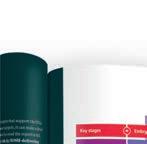
The IOSH model of safety
In the March/April issue, we provided a brief introduction to the IOSH model of safety (below left) which is used to assess and understand where your organisation is on its journey to OSH maturity. Here we describe the key elements that can be progressed from embryonic to active (OSH compliance) to proactive and integrated stages (beyond compliance).
Understanding of OSH risk
All workplaces have an element of risk to health, wellbeing, wealth, property or the environment. Organisations are legally required to identify and assess harm potential and control significant risks. This element describes the organisation’s understanding of OSH risk, or its ‘risk perception’.
Prevailing attitude to OSH
Attitudes towards OSH are personal. They are developed over time from a young age. Attitudes are influenced by many factors: the country and culture you were raised in; your parents, teachers, friends and colleagues; and other events and experiences that have shaped your life. This element looks at the collective or prevailing attitude towards OSH within an organisation.
We want to extend our reach to hear from diverse businesses across these three forums, and provide useful insights for our readers from the conversations taking place; there is respons OSH controls a and maintaine for our readers from the conversations there is more to come
Locus of OSH responsibility
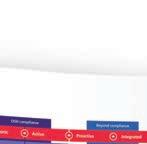
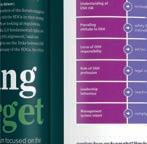



meet the needs of their organisation as it matures. There is always the need for technical skills, legal compliance, system development and audits, but – particularly for the senior OSH leader – professionals will need to be commercially aware and cognisant of the organisation’s approach to business, and the wider context in which it operates, both internally and externally.
Leadership behaviour
All leaders within an organisation influence the behaviours of others. Their values, beliefs and attitudes shape their behaviours, which in turn influence their teams. What they do or don’t say – or do and don’t do – is often memorable to their team and will set the tone, indicating the behaviours and attitudes they expect to be mirrored.
Management system intent

Who is responsible for ensuring appropriate OSH controls are identified, implemented and maintained on a day-to-day basis?
There is a difference between accountability and responsibility, and this should be clearly defined with an OSH management system. This element describes where accountability for all aspects of OSH management and performance is perceived to sit at various levels of maturity.
The role of the OSH professional


This element explores how the role of the OSH professional adapts and changes over time to
An OSH management system is the framework, specific to an organisation’s risk profile, that pulls together all of the various policies, planning, safe systems of work, information and guidance required to maintain good OSH management. It should be considered ‘live’ and not set in stone – it needs to constantly evolve. This element explores the degree to which it is critically maintained to ensure that it is not disproportionately burdensome to the organisation and that it evolves in line with organisational maturity levels.
Supporting webinars
We have recently produced a series of three webinars to support understanding and practical application of the model of safety: Webinar 1 provides an introduction to the model of safety
Webinar 2 explores practical application in the workplace
Webinar 3 isa panel discussion focused on understanding and applying the principles of cultural maturity.
Details for these webinars can be found at iosh.com/business
29
IOSH MAGAZINE
Shining a light on OSH inequality
Globally, around 80% of working people do not have access to basic OSH services. Research at Lancaster University asks how this might be improved.
Of the world’s 3.4 billion working people, about four out of five do not have access to basic OSH services. Where these services are available, they are known to vary in quality, content and scope.
For Nicole Rinaldi, IOSH director of professional services, this is completely unacceptable. ‘Every worker around the world has the right to a safe and healthy workplace,’ she says.
It is with this in mind that researchers have begun exploring the factors that
influence OSH programmes and service delivery, and how the current situation might be improved.
Part-funded by IOSH, experts from Lancaster University in the UK are collaborating with teams at the International Commission on Occupational Health (ICOH) secretariat, two scientific committees (Effectiveness in Occupational Health Services and Occupational Health and Development) as well as the ICOH working group on inequalities in occupational safety and health.
Delving deeper
This is the first research project IOSH has supported since it reopened its research for public benefit fund in 2022 as part of its work to deliver on its charitable objectives.
Following the adoption by the International Labour Organization of a safe and healthy working environment as a fundamental principle and right at work earlier that year, IOSH sought out research teams who could look into the current state of play of OSH around the world and provide insights into how the situation could be improved.
MAY/JUNE 2024 | IOSHMAGAZINE.COM 30 THE KNOWLEDGE OSH SERVICES
ILLUSTRATION: ISTOCK
WORDS MARCUS BOOCOCK
Having begun in March, the project is set to take around two years to complete, with the researchers seeking to gain a better understanding of the scope, reach and effectiveness of OSH services around the world.
Among the issues they will explore are:
The influence of a country’s economic status, national policy, laws and regulations, organisation size, models of work and occupational sectors
The facilitators and barriers that influence how OSH is delivered and to establish how this knowledge could be used to improve and promote OSH.
Nicole adds: ‘It is unacceptable that so many people don’t have access to good OSH services. We hope this research will shine more light on what is preventing good OSH provision in all parts of the world and how any barriers can be overcome.
‘We are looking forward to working closely with the research teams at Lancaster University and ICOH on this project, which has the potential to be the catalyst for change in workplaces around the world.’
Six stages
The project will take part in six stages and feature a number of different methods. These include a literature and policy review, case studies, a global survey, stakeholder interviews and a global roundtable.
These activities will allow for the review of the current state of OSH services and the updating of existing conceptual models that can guide future research, policy and practice. Input from subject experts will supplement the multidisciplinary knowledge generated through the literature reviews that will be of value to researchers, policy-makers and practitioners.
Identified gaps will inform future actions both in national contexts and globally; the developed recommendations
HIGH OSH STANDARDS ARE PARAMOUNT FOR THE FUTURE OF WORK AND THE ACHIEVEMENT OF THE UN SUSTAINABLE DEVELOPMENT GOALS
will be translated into several outputs that will be disseminated widely, including scientific papers and reports, case studies, information sheets and white papers.
Consensus on priorities for the future of effective OSH service delivery will specifically recognise and promote safety and health as a universal fundamental right at work. Adoption of the findings of the project would improve policies and practices on OSH services and would result in higher standards for workers and sustainable and healthy working lives.
Stavroula Leka, professor of organisations, work and health at Lancaster University in the UK, has been appointed as the principal investigator.
She said: ‘High OSH standards are of paramount importance for the future of work, and for the achievement of the UN Sustainable Development Goals.
‘However, it is estimated that 80% of the global working population still do not have access to basic OSH services and where these services are implemented, they vary in scope, content and quality, with a multidisciplinary, comprehensive approach addressing both physical and mental health and wellbeing, seldom being undertaken.
‘We are excited to be embarking on this research, in collaboration with ICOH, to generate new knowledge on global state-ofthe-art OSH service delivery and provide consensus on priorities for the future of effective OSH service delivery with a global focus, recognising safety and health as a universal fundamental right at work.’
TAKING PART
IOSH members are encouraged to take part in the study if approached. A robust project, it is anticipated that progress can be made in addressing identified barriers and facilitators to OSH service delivery that will positively impact the lives of working people.
IOSH, Lancaster University and ICOH will publish updates during the research project, which is due to complete by spring 2026.
FIND OUT MORE
More IOSH commissioned research is expected to be launched in due course. The 2023-24 call for research should lead to studies in the following areas:
Investigation of work-related adverse health outcomes in the workplace: barriers, facilitators and guidance
Occupational health training for OSH professionals: context, challenges, and opportunities
Algorithmic management and OSH risks in a digital workplace. Another call for research in specific areas of interest will be launched towards the end of 2024.
RESEARCH ADVISORY GROUP
A Research Advisory Group is in place to support IOSH in reaching its decisions on which projects to support. However there are other ways for members to get involved. Members, particularly those with a background in research (for example, those with a master’s degree), are encouraged to participate by assessing proposals and evaluating reports. Anyone interested can email the team at rfunding@iosh.com.
IOSH MAGAZINE 31
</ Decoding your payslip >
[ Our survey of more than 2700 health and safety prac oners provides a snapshot of the profession’s pay and condi ons at the start of 2024, along with insight into qualifica on and mo va on levels. ]
</ Words Louis Wustemann >
[ Snapshot of pay and condi ons in 2024 ]
2725 respondents = 17% > in 2022; (29% aged 55 and above), (69.5% male, 29.8% female, 1 non-binary, 19 uniden fied);
[ Sector ]
Construc on =(21.2%), Manufacturing =(16.8%),
Transporta on and warehousing =(6.3%), Consultancy and training =(6.1%),
THE BIG STORY SALARY SURVEY 2024 32 MAY/JUNE 2024 | IOSHMAGAZINE.COM Start up.Open.Please wait; Loading IOSH magazine Salary Survey 2024; [[ Page 32 ]] } } }
[ Figure 1 ]
How old are respondents?
> 18-24 – 1.2%
> 25-34 – 12.8%
> 35-44 – 24.4%
> 45-54 – 32.4%
> 55-64 – 26.4%
> 65-74 – 2.8%
> 75+ – 0.1%
[ Figure 4 ]
What IOSH membership grade do respondents hold?
> Non-member – 3.4%
> Student Member - 1.6%
> Affiliate Member – 9.8%
> Technical Member – 26.1%
> Cer fied Member – 29%
[ Figure 5 ]
What qualifica ons do respondents hold?
> SHE appren ceship: 1.5%
> Bri sh Safety Council cer ficate: 2.5%
> NCRQ cer ficate: 4.6%
> NEBOSH cer ficate: 68.1%%
> NVQ Level 3: 5.2%
> IOSH Level 3 cer ficate: 4.5%
> NEBOSH construc on cer ficate: 16.4%
> Bri sh Safety Council diploma: 1.7%
> NVQ Level 6: 16.6%
> NCRQ diploma: 6.5%
> NEBOSH diploma: 28.7%
> Bachelor’s degree: 17.7%
> Postgraduate diploma: 8.1%
[ Figure 2 ]
What are respondents’ job tles?
> Safety and health appren ce – 0.6%
> Safety and health trainee/graduate – 0.4%
> Safety and health assistant/coordinator – 3.4%
> Safety and health officer/adviser – 26%
> Safety and health trainer – 1.8%
> Safety and health consultant – 10.1%
> Safety and health manager – 40%
What sector do respondents work in?
> Accommoda on and food services (1%)
> Agriculture, forestry, fishing, hun ng (1.3%)
> Arts, entertainment and recrea on (1.7%)
> Construc on (21.2%)
> Consultancy and training (6.1%)
> Educa onal services (6.1%)
> Finance and insurance (1.1%)
> Healthcare and social assistance (3.8%)
> Informa on and communica on (1%)
> Management and remedia on services (0.2%)
> Manufacturing (16.8%)
> Mining, quarrying, oil and gas extrac on (2.7%)
> Professional, scien fic and technical services (2.9%)
> Public administra on (4.8%)
> Real estate, rental, leasing (1.5%)
> Transporta on and warehousing (6.3%)
> U li es (3.9%)
> Wholesale/retail trade (1.8%)
> Other (15.8%)
IOSH MAGAZINE 33
[ Figure 3 ]
</ Loading copy... > Start Load [[ } } } [ Sna 2725 ( ( [ Sec C T E U P M V [ Me C C T A N S C Gen [Me Non}
Professional, scien fic and technical services = (2.9%), Mining, quarrying, oil and gas extrac on = (2.7%), Various (<2%), Other (15.8%);
SalarySurvey.IOSH
Our online survey, promoted on the IOSH magazine website, was open from 5 January to 15 February and 2725 OSH professionals responded –17% more than the 2333 who replied to our last pay survey in 2022. Almost 97% are IOSH members.
They gave us details of their qualifications, membership levels, pay, wage increases and non-pay benefits, giving a clear picture of how the OSH profession is remunerated and highlighting differentials between membership grades and between male and female practitioners.
</ The survey sample >
Respondents are mostly UK-based (around 94%), with small numbers from the Republic of Ireland (2%) and New Zealand (0.5%) and a few each from a handful of countries including Australia, India and Saudi Arabia.
Just over 29% of the sample are aged 55 and above, up from 26.5% in our last survey in 2022. The proportion of respondents under 35 has fallen slightly since our last poll, from 16% to 14%. The change is not large in itself but suggests that more could be done to attract younger talent into the profession. The work by IOSH's Future Leaders community on motivating younger people toward OSH careers will hopefully mean broader results in the next salary survey.
The gender split in our survey is almost exactly the same as two years ago: 69.5% of OSH professionals identify as male and 29.8% as female. Only one practitioner identifies at non-binary, although 19 preferred not to answer the question. The proportion of females increases in the younger age groups, rising 10% to 39% among respondents aged 25 to 34.
We asked respondents to select from a list of typical job titles the one that corresponds most closely to their own – discounting extra duties such as environment or quality management. Two in five (40%) chose health and safety manager. The proportion of heads of department and OSH directors has risen marginally since our last pay survey and

[ Figure 6 ]
</Median salary by job tle>
Safety and health assistant/coordinator > £34,000
Safety and health officer/adviser
£41,000
Safety and health consultant
£50,000
Safety and health manager
£50,000
Head of safety and health
£69,000
Safety and health director
£85,000

the number of assistants, apprentices and trainees at the lower end has fallen slightly.
The overwhelming majority are full-time employed (94%) with the rest split almost evenly between part-timers and the self-employed.
Almost three-quarters of practitioners work in the private sector, more than one in five in public services and only one in 20 (5.5%) in the charitable or third sector. Respondents could choose from a list of industrial sectors and the results (see Figure 3) show that construction and manufacturing are the biggest sectors.
As Figure 4 shows, more than 96% of OSH practitioners in our poll are IOSH members, the bulk of them in the Technical, Chartered and the recently introduced Certified grades. Asked which other professional bodies they are members of besides IOSH, participants’ most common response (42.5% of respondents) is the

Institute of Environmental Management and Assessment (IEMA), reflecting the frequency with which OSH and environmental management responsibilities are conjoined by employers.
The spread of qualifications held by OSH professionals has changed little since our last survey, with only a 1% or 2% change for each qualification. The proportion of respondents with bachelor’s degrees has risen by just over a percentage point to 17.7%.
Only around one in five of the 447 respondents who hold a NEBOSH construction certificate work in the construction sector, probably reflecting the mobility of practitioners who start in the building industry into other sectors, but also perhaps the need to understand OSH in construction for those managing sites in other sectors. A facility to note other qualifications than those listed in Figure 5 revealed that 71 (around 2.5%) hold Level


Start up. 2725 respondents = 17% > in 2022
55 and above), ( male female
(29% aged
34
MAY/JUNE 2024 | IOSHMAGAZINE.COM THE BIG STORY SALARYSURVEY2024 02 U li es (3.9%), Healthcare and social assistance = (3.8%),
>
>
>
>
>
4 or 5 National or Scottish Vocational Qualifications (NVQs or SVQs) in OSH.
Half the respondents (49.2%) say they are not allocated any discretionary professional budget to spend each year – up from 45% in our previous survey. Among those allocated budgets, the median figure falls in the range £20,001 to £50,000. At the top end, almost one in 20 budget holders are each responsible for spending £500,000 or more a year, presumably making them responsible for training procurement and/ or personal protective equipment.
Construction is commonly the single largest sector represented in surveys of OSH practitioners, and our poll is no exception: the building industry accounts for more than a fifth (21.2%) of the survey participants. Manufacturing, transportation and the education sector are the other largest sectors.
Few respondents reported long tenure in their current jobs. Only 17% have more than 10 years in post, while just over 60% have five years or fewer.
</ Pay rates >
The average pay levels we quote are median averages, the midpoint in the range of all pay rates.
The survey allowed participants to state their annual pay to the nearest thousand pounds – converted, if they are paid in another currency – from £15,000 to £80,000. Above £80,000 we offered bigger steps of £10,000, up to £100,000 and then of £25,000 up to £150,000. Two
JUST OVER 60% OF RESPONDENTS HAVE FIVE YEARS OR FEWER IN THEIR CURRENT ROLE
dozen respondents reported earning above £150,000, a third fewer than in our 2022 poll. At the lower end, 29 said they are paid under £15,000. At the lower end, the outliers almost matched the whole sample for age and gender, but at the upper end, those paid more than £150,000 were all male.
The average salary for all full-time employed practitioners is £50,000, and half of all full-time respondents earn between £42,000 and £66,000. The average earnings for self-employed respondents are higher at £65,000; this figure comes with the caution that there was only a small sub-sample of freelance practitioners (69 or 2.5% of all respondents) who participated in the survey.
Our £50,000 median for full-time employed practitioners is around 16% higher than the comparable figure of £43,000 we recorded in 2022. The respondents to the two surveys are not a matched set so some of the variation may be down to differences in the composition of the samples, but as our data on pay awards shows, the jump also reflects increases in salary levels for some OSH professionals to compensate for high levels of price inflation. In the UK, inflation – as measured by the Retail Prices Index – was running at more
than 10% for 15 months of the 24 months between the two polls, peaking at 14.2% in October 2022.
Nicole Rinaldi, IOSH director of professional services, says of the survey findings: ‘While we recognise not all respondents are the same as those who completed the previous survey, it’s encouraging to see median salaries increasing, particularly during such a challenging financial time. OSH professionals provide significant value to businesses in so many ways and we are keen to see that this is recognised.’
</ Managers’ salaries >
The most common job held by respondents is safety and health manager. The £50,000 median for all managers shown in Figure 6 is the same for those in the public sector, but managers’ salaries in the private sector are higher at £58,000. Half the managers earn between £43,000 and £60,000.
Managers in construction earn £58,000 a year; those in manufacturing earn £50,000, while in transport and logistics the average fell to £48,000.
</ Pay by membership grade >

</ It’s of interest that the mean salary of IOSH members is higher than that of non-members >













The figures suggest that it pays to be an IOSH member. The median salary for full-time non-member respondents (albeit based on a relatively small sample of 89 people), is £40,000, a fifth below the median for the whole survey and almost a third lower than the median for Chartered Members working full time. ‘It’s of interest that the mean salary of IOSH members was higher than that of non-members,’ says Nicole, ‘though the sample size of the latter group was relatively small. This demonstrates that being an IOSH member can have a positive effect on how you are paid as an OSH professional.’
In the Chartered grade, which is directly comparable with our previous survey, the median salary is £59,000, 11% higher than the £53,000 in 2022, though the two samples were not a matched group of practitioners. Those in the new Certified grade earn an average £50,000 in line with
); respond 29 and above), 69.5 female 1 non-binary 19 uniden fied);
IOSH MAGAZINE 35
2; non-binary nide fied 2725 (29% aged 55 above (69 5% male 29 8% fem Transporta on and warehousing = (6.3%), Consultancy Educa onal services = (6.1%), Public administra on = (4. U li es (3.9%), Healthcare and social assistance = (3.8% SalarySurvey.IOSH














































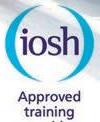

Safety & Risk Management Postgraduate Qualifications Strathclyde Centre for Occupational Safety and Health Postgraduate Certificate, Diploma or MSc level Study from anywhere by distance learning Practitioner-led support Meets the academic requirements for CertIOSH Attain practical knowledge of direct use in the workplace CPD courses also available including IOSH Managing Safely Courses commence September each year The University of Strathclyde is a charitable body, registered in Scotland, number SC015263. t 0141 548 2392 e scosh@strath.ac.uk www.strath.ac.uk/studywithus/centreforlifelonglearning New Starter Induction Company Rules Product Training Company Health & Safety Policy Induction in progress Contractor Induction Contractor Safety Site Rules 2024 Company Health & Safety Policy Expired: Deny Entry Digital Inductions & Training. Induct & Train 30 DAY FREE TRIAL
Public administra on = (4.8%), lthcare and social assistance = (3.8%),
the median for the whole sample; in 2022 the figure for the old equivalent GradIOSH membership was £44,000, 13% lower.
Around one in 10 (10.8%) said safety practitioners at their workplaces are incentivised by their employer to gain Chartered Member status, most commonly with a pay rise, although one respondent explained that the reward for gaining chartered status is non-financial: ‘[It is the] self-fulfilment of achieving best of the best in the profession.’
In answer to whether their pay has risen since becoming Chartered Members, 296 said that their earnings have increased, around one in three of those in our sample with Chartered status.
</ The gender pay gap >
In our previous two polls, the gap between male and female OSH practitioners’ average pay was £2000; in our current poll it is substantially wider at £5000. The median pay for all full-time female practitioners is £45,000 compared with £50,000 for males. This 10% disparity holds true when we exclude the minority of nonUK respondents from the analysis and is

higher than the UK government’s gender pay gap figure for alloccupations of 7.7% for full-time workers in 2023. There is nothing in the make-up of the male and female groups in our current poll (seniority, age or sector) that offers an easy explanation for the higher differential.
Since the sample of OSH

</ Pay rises >
> Pay freeze – 28.8%
> 1% – 3.4%
> 2% – 10%
> 3% – 15.3%
> 4% – 10.2%
> 5% – 15.7%
> 6% to 10% – 13.3%
> More than 10% – 3.5%

practitioners giving us their pay data is not the same as in previous surveys, we cannot say confidently that female practitioners’
AT 10%, THE GENDER PAY GAP AMONG RESPONDENTS IS HIGHER THAN THE UK AVERAGE
wages have risen more slowly than their male counterparts. The gap does narrow to £3000 or 6% when the comparison is restricted to
just those with the safety and health manager title.
the 12 months before the survey (see Figure 8). The median increase for all employed respondents was 3%, but around a third of respondents (32.5%) received rises of 5% or more. In our 2022 survey, when inflation rates had only recently risen above 4% for the second time in almost 10 years, only 8.6% of respondents reported pay increases at this level. Despite these higher levels for some practitioners, the most commonly reported award was no increase at all; almost three in 10 people in our poll had their pay frozen in the previous 12 months.
‘My salary grew by 2% or 3% from 201721,’ wrote one safety and health manager in manufacturing.’“I feel this was meagre considering the company was doing well.’



</ Earnings by membership level >
> Non-member (3.4%) £40,000
> Student Member (1.6%) £34,000
> Affiliate Member (9.7%) £40,000
> Technical Member (26.2%) £43,000
> Cer fied Member (29.2%) £50,000
> Chartered Member (28.5%) £59,000
> Chartered Fellow (1.3%) £70,000


‘The survey results have flagged some areas where we are determined to see continued improvements,’ says Nicole. ‘The gender pay gap is one, and the reduction in respondents under the age of 35 indicates that we need to do more to attract younger people into the profession. We will be reviewing this and considering the best ways to respond.’
</ Pay rises > High inflation in the past two years is clearly reflected in responses to a question about respondents’ pay increases in
‘I feel my salary is now just below what I feel I am worth based on my professional standing, qualifications, experience and my current role,’ added another manager for a UK charity who earns £44,000 a year. ‘However, this is only due to a significant costof-living salary increase in 2023 and a more significant increase as a result of informing my employer I was attending an interview for a position outside of the company. Had it not been for these two increases, my salary would now be approximately 15% less and significantly below my expectation.’
Most practitioners (82%) said their work performance was assessed annually, most commonly against objectives, key performance indicator targets or on a mixture of personal and business performance. Around 24% said they were judged on annual accident rates and a similar number on overall business performance. Only 18% said their pay was tied to these metrics.
warehousing = (6.3%), Consultancy and training = (6.1%), =
(6.1%),
IOSH MAGAZINE 37 THE BI G ST OR Y 5 0 YEAR S OF H SW A
[ Figure 7 ]
[ Figure 8 ]
SalarySurvey.IOSH
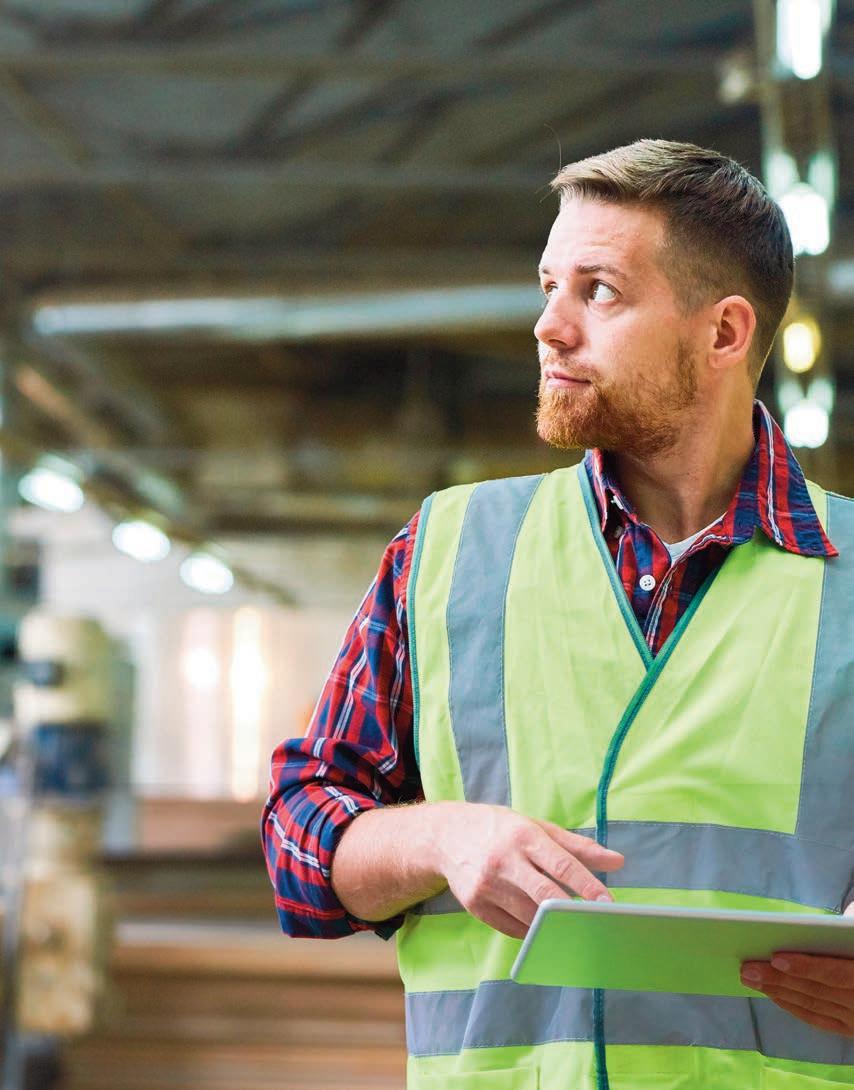
Know how far you can go?
Assessing your OSH progress to identify new opportunities
our recent webinar series, we explored how to assess your organisation’s progress on its journey to OSH maturity.
using the IOSH model of safety – you can better understand the strengths and weaknesses of your business’s culture and processes. It makes
easier
keep track of your efforts and impacts, earn buy-in from key stakeholders and move your company beyond compliance. Because
where
now
you can make sure you get to where you want to be. Let’s work together. Let’s advance your OSH maturity. Search for IOSH for Business to watch the webinars or email our friendly team at business@iosh.com Search IOSH for Business
In
By
it
to
it’s only by understanding
you are
that



[ Figure 9 ]
</ The most important elements in prac oners’ work >
> Benefits package – 19.6%
> Level of responsibility – 23.1%
> Salary – 63.6%
> Management style/culture – 41.3%
> Loca on – 33.3%
> Flexible/hybrid working – 45.4%

> Job security – 44%
> Diverse and interes ng work – 37%
> Training and development – 19.5%
> Company reputa on – 29.4%
> Annual leave en tlement – 21.6%
> Organisa on’s purpose – 18%
Almost half our sample (45%) received bonuses on top of their salaries last year. Bonuses averaged 5% across the whole sample, although one in 20 of those who were awarded additional payments (4.8%) said they boosted their pay by more than 10%.
</ Employee benefits >
Figure 10 shows the non-salary benefits our employed survey participants receive. As in previous polls, the small majority who have access to a company pension scheme most commonly report that they are offered money purchase arrangements in which the money they receive in retirement will be dictated by variations in the financial markets in the years before. Final salary arrangements which pay a predictable income based on years worked with an organisation, have become rarer, and are only accessible to one in five, mostly older respondents.
Around one in six of the private-sector respondents have access to shares in their company on tax-friendly terms. A few respondents mentioned private medical insurance. Around one in 10 employed
spondents = 17% > in 2022; aged 55 and above),
Mining , quarrying (<2%), Ot



and technical services = (2.9%), Mining, quarrying, oil and gas extrac on = (2.7%), Various Other (15.8%);
choose three motivating factors. The most common element cited was salary, ticked by almost two-thirds, followed some way behind by a cluster of flexible working arrangements and management style and culture. A safety and health officer, aged between 55 and 64 working in local government, noted that salaries in his sector were ‘not the best’, but ‘work/life balance, pension, flexible working and a more relaxed, supportive culture are superior and add to the quality of life – after working 30 years in the private sector’.
> Opportuni es for career progression – 24.4%
participants in our poll (9.8%) said they have no entitlement to any of the benefits listed. We also asked whether respondents have the option of hybrid working or flexible hours arrangements in their current work; 62% say they do. We do not have any comparison from before the COVID-19 pandemic of
2020-21, but it is likely that the percentage would have been far lower before the enforced period of home working showed employers and employees the potential for flexible working in many jobs. As Figure 9 illustrates, more than two-fifths of practitioners rated flexibility as one of their top three elements in their job.
</ Motivation > Figure 9 shows the answers to a question about what factors respondents most valued in their current work positions. Respondents could
% male 29.8% female 1 non-binary 19 uniden fied);
Studies published by management consultants have noted how important it is to employees to work for organisations with a purpose beyond just generating profit. That is not the case with our respondents. Organisational purpose was the least frequently rated motivational element –chosen by fewer than one in five (18%), evenly spread across the age groups. We are unsure whether our sample is unswayed by the idea of corporate purpose or whether they do not believe their organisations have an expressed aim other than a healthy bottom line.
‘I’d like to thank everyone who took the time to complete this survey,’ says Nicole. ‘I recognise it takes time out of your day but the results are very important to us as we continue to explore new ways of supporting and building the profession.’
For references, visit ioshmagazine.com/salary-survey

SalarySurvey.IOSH
[ Figure 10 ]
</ Employee benefits >
> Company car – 27.5%
> Money purchase pension – 36%
> Final salary pension – 18%
> Employee share scheme – 11.5%

Healthcare and social assistance = (3.8%),
scien fi
Professional,
c
THE BIG STORY SALARY SURVEY 2024
U li es (3.9%), H
SalarySurvey.IOSH IOS H M AGA ZIN E
PRACTICE
EXPLORE SKILLS, IDEAS AND THEORIES
HOW TO IMPROVE AHE INVESTIGATIONS
Investigating incidents that result in physical injury has long been a mainstay of OSH management systems, but how can we strive to find the direct and indirect causes of adverse health events?
WORDS DR KAREN MICHELL
Insights for this paper have been drawn from IOSH webinars and are reflective of the opinions raised by the panellists.

The definition of an occupational accident is an identifiable, unintended incident, arising out of work, that causes physical injury or harm, whereas an occupational disease covers any disease contracted because of exposure to hazards arising from a work activity. We must note here that, in many countries, there is an official list of occupational diseases, and a disease has to be on that list to be recognised and for anyone affected to have a chance of compensation.
An accident is a singular event in time, making it easy to pinpoint when it happened. However, an occupational disease occurs over a period of time – ranging anywhere from days to years – so it is more difficult to identify. Occupational diseases are often diagnosed once pathology has set in (such as occupational asthma or noise-induced hearing loss), which means the opportunity to identify early signs and symptoms or to prevent progression of the disease process is missed.
A deeper exploration is needed to understand why occupational diseases and other adverse health events (AHEs) are not
40MAY/JUNE 2024 | IOSHMAGAZINE.COM
afforded the same degree of rigorous investigation as an occupational accident. If organisations do not investigate AHEs rigorously, they will fail to learn from past experiences, unsafe situations may be perpetuated, and the burden of death and disability associated with occupational disease will continue.
IOSH has worked with the International Commission on Occupational Health (ICOH) to explore the investigation of AHEs, and practical takeaways from this are included in IOSH’s Blueprint.
The development and implementation of effective investigation tools has helped to reveal causative pathways and to determine remedial actions for improving control and prevention. While this is commonplace, it is less common to see such techniques applied when an occupational disease (such as work-related psychosocial stress or occupational cancer) is diagnosed. This is despite the World Health Organization and International Labour Organization’s global monitoring report Joint estimates of the work-related burden of disease and injury, 2000-2016 (2021) demonstrating the high burden of occupational disease on deaths (80.7% of all work-related deaths) and disability (70.5% disability adjusted life years) in worker populations.
What factors influence an AHE investigation?
In the early stages, occupational diseases often present with mild symptoms similar in nature to other common ailments (such as colds and flu). Workers unaware of these early warning signs fail to link the symptoms they experience with workplace exposure. For this reason, they may seek help through a GP rather than an occupational medical practitioner. GPs are not trained to make the link between AHEs and occupational causation, often leading to underdiagnosis – so a lack of understanding of the nature of occupational diseases can be a factor.
Occupational diseases can often have a long latency. Conditions such as mesothelioma have a latency period meaning that the worker may have been exposed 10, 15 or 20 years before a diagnosis is made. The worker may well have changed employer more than once in that period, making it difficult to trace back to the source

IF ORGANISATIONS DO NOT INVESTIGATE ADVERSE HEALTH EVENTS RIGOROUSLY, THEY WILL FAIL TO LEARN FROM PAST EXPERIENCES
of exposure. If they are working for another employer, the new employer may have little motivation to investigate.
Risk management systems often exclude the health risk. Safety professionals who conduct the risk assessments lack training in the health aspects of workplace exposures. When completing the risk assessment, these exposures are then omitted or understated, rating them as low and resulting in a lack of recognition of latent risk.
Lack of empowerment among workers can also be an issue. If workers are not familiar with the health effects of workplace exposures, they will not report these to the OSH team. And if they are not represented on the risk assessment team, their voice on signs and symptoms experienced by their colleagues is missed.
Both safety professionals and healthcare professionals (such as doctors and nurses) often lack expertise around how to investigate occupational diseases. Training courses very often focus on the investigation of an accident, which is more easily identified. The investigation of an occupational disease or any other AHE differs
41 IOSH MAGAZINE IMAGE: GETTY

Do you need to monitor workplace health hazards?
Shawcity partners with thousands of customers every year across the UK & Ireland, supplying technology for health & safety, occupational hygiene and environmental monitoring.
Our portfolio of solutions from 20+ world-leading manufacturers means we’ve got you covered for:
• Air quality
• Area monitoring
• Asbestos
• Benzene
• Confined space
• Fit testing
• Fixed gas detection

Plus:

• Ground gas & contaminated land
• Heat stress
• Leak detection
• Mercury
• SF6
• Single & multi gas
• Sound & noise
• Vibration


• Free site surveys
• Free product demonstrations
• Free product training
• Free ongoing technical support
• Free fleet management support
• Large hire fleet available.
In-house facilities:
Our manufacturer-authorised in-house centre offers servicing, calibration, spares and repairs.
• VOC gas detection
• 300+ OEM gas sensor products
• Calibration gas
• Spares and accessories.








Fixed gas detection systems:
A complete service from site survey, design, installation, commissioning and handover to ongoing maintenance. We offer the widest and most comprehensive range of manufacturer options to suit every budget and our engineers are all CSCS and SSSTS certified.







Trusted. Impartial. Reliable. Since 1976. Contact Shawcity to discover how we can support your next
01367 899419 solutions@shawcity.co.uk shawcity.co.uk
project.
from that of an accident because the condition needs to be brought to the attention of the professionals, who will then investigate the cause and attempt to identify a link to workplace exposures.
There is sometimes a poor understanding of exposure through the manufacturing/production process and how risk changes as chemicals change. Many chemicals are harmless but, once changed through the manufacturing process, they become highly toxic. One such example is hexavalent chrome, which is a valance state of chrome and a known carcinogen in the hexavalent state. If this is not understood, the early nasal symptoms can be passed off as a common cold. Exposed workers can include welders and electroplaters.
Finally, a lack of consultation and collaboration between OSH professionals often leads to a missed opportunity to link an accident with an underlying health condition (for example, a finger laceration could be caused by Parkinson’s tremors and, if missed, may well recur).
How can the investigation of AHEs be improved?
Risk assessments need to better address the health effects associated with workplace exposures. For example, they need to follow chemicals through the manufacturing process and ensure the ‘hazardous phases’ of chemicals are not missed.
There is no single, prescribed group of people required to investigate an AHE – it is entirely context-dependent. Third-party expertise may be a vital component in certain cases. Most of the time, a multidisciplinary team will be required to understand the complexities of the root causes.
Obtaining a comprehensive occupational exposure history from workers is a key tool for diagnosing occupational disease. Where possible, new starters should be encouraged to bring their past exposure history with them from their previous employers.
Understanding the impacts of chemicals on health should motivate us to find healthier alternatives – for example, replacing solvent cleaning with waterbased cleaning, or avoiding 12-hour shift rotations given the negative health impacts which have been demonstrated. OSH practitioners may be familiar with the term ‘safety by design’, but this concept needs to extend to ‘health by design’.
Training courses should be improved so they cover the unique characteristics of the investigation of
Key takeaways for practitioners involved in AHE investigations
Recognise your limitations and include other team members and experts to assist your investigation where required.
Take a multidisciplinary approach, where disciplines collaborate to determine both direct and indirect causes of an AHE.
Always be suspicious a health concern could be related to workplace exposure.
Build a broader preventative culture which is founded on worker health and wellness.
Improve risk assessments where possible to better address healthrelated issues through greater knowledge and an enhanced understanding of health hazards.

AHEs. These courses need to promote the need to establish root causes and not just settle for simple solutions.
If workers are included more, we have a better chance of spotting AHEs. The nature of early warning signs is often similar to common colds and other primary healthcare issues, resulting in them being discounted. Educating the workforce would help them to recognise relevant signs and symptoms. Ensuring that they understand the relevance of the signs and symptoms associated with their work-related exposures would mean that they are informed and can report these sooner.
The burden of disease in the workplace far outweighs the impact of injuries. It is essential therefore that AHEs are investigated, and that the root cause and contributing factors are identified and addressed to ensure that future disease is prevented.
As professionals, we need to improve the investigation of all AHEs with the intention of identifying the cause and implementing tighter controls to prevent exposure.
IOSH MAGAZINE 43
IMAGE:GETTY THE PRACTICE HOW TO...

SIGNS Spotting the
Menstruation and the menopause affect many people globally – both physically and psychologically. How can OSH professionals best support employees to create fully inclusive workplaces for all?
WORDS KATIE SMITH
MAY/JUNE 2024 | IOSHMAGAZINE.COM 44 THE PRACTICE MENSTRUATION AND MENOPAUSE
Around 12% of the world’s population is expected to experience menstruation or menopause by 2025 –equal to one billion people (BSI, 2024). Hot flushes, stomach cramps, loss of confidence and suicidal thoughts are just some of the symptoms associated with these stages in life. While not everyone will experience these, they can impact an employee’s ability to work safely.
Kate Field CMIOSH, global head of human and social responsibility at standards group BSI, explains: ‘The vast majority of women will have menstruation and menopause symptoms that will have very little or no impact on their life and work in particular. But the reality is that more women are in the workforce, and therefore there will be a greater percentage who will be experiencing more severe symptoms.’
These may be caused by conditions such as endometriosis, polycystic ovary syndrome and premenstrual dysphoric disorder (PMDD) (See Menstruation and menopause facts, overleaf).
alleviated and the risk therefore reduced.
Whether it’s at offices, warehouses or shops, two in five women in the UK who menstruate at work fear leakage through their clothes (WaterAid, 2023).
This is top of mind for Chloe Kirkbride, global wellbeing lead at Rolls-Royce, who is studying for a PhD on menstrual experiences in the workplace. ‘Not only is there this shame and stigma with managing a menstruating body, but also that fear of detection – of being recognised that you’re menstruating or going through the menopause,’ she says.
Unsupportive workplaces can have a significant impact on those affected, increasing stress, anxiety and depression.
ONE IN SIX MENOPAUSAL WORKERS IN THE UK HAVE CONSIDERED QUITTING DUE TO A LACK OF SUPPORT
Problematic menstruation, menopause and perimenopause symptoms can result in disturbed sleep and insomnia, Kate says. ‘We know from human factors studies that fatigue is one of our biggest hidden health and safety risks.’
But human error must also be considered. ‘If there’s an individual who’s bleeding heavily, they might be concerned about being able to get to a toilet quickly to change their sanitary product,’ she explains. ‘If there isn’t accommodation for this and they’re worried about it, they’re distracted and might make a mistake.’ This issue could easily be

‘If someone has had a lot of time off, they might be worried about the impact on their performance, development and career,’ Kate says. ‘In worst-case scenarios, they might be discriminated against in the form of bullying and harassment.’
Chloe adds:
‘Ultimately, that means they might reduce their engagement, productivity and potentially increase their risk-taking behaviour. It builds and builds, and people start leaving the workforce.’
Around one in six menopausal workers in the UK have considered quitting due to a lack of support in relation to menopause symptoms. A further 6% have left (CIPD, 2023).
In light of a recent Equality and Human Rights Commission (EHRC) report (2024), UK workplaces are called upon to make ‘reasonable adjustments’ to accommodate workers going through the menopause. Failure to make these adjustments can be considered as disability discrimination under the
Legal rights
Access to sanitisation is recognised by the United Nations as a human right. ‘Sanitary facilities should be safe, hygienic, secure and enable privacy – all of which are important, especially during menstruation and menopause,’ says Ruth Wilkinson, IOSH head of policy.
However, this is not always the case. According to one report, exposure to violence or the threat of violence, including rape and sexual harassment is a daily reality for transport workers – particularly females (International Transport Workers’ Federation, 2019). ‘This may result partly from poorly situated toilets in unsafe places, a lack of separate toilets for women, or no toilets at all,’ Ruth explains.
Since then, the International Labour Organization (ILO) has created new global standards. Governments that ratify ILO convention 190, which came into effect in 2021, will need to put the necessary laws and policies in place to prevent violence and harassment at work (ILO, 2019).
In the UK, it is a requirement to provide ‘suitable and sufficient sanitary conveniences’ at readily accessible places under the Workplace (Health, Safety and Welfare) Regulations 1992. The Approved Codes of Practice cover privacy as well as the minimum number of toilets for male and female workers based on how many are working (HSE, 2007).
‘Employers are responsible for providing a safe workplace for employees, which includes proper sanitation and separate facilities for men and women, except where each toilet is in a separate room lockable from the inside,’ Ruth says. ‘These facilities should include a disposal bin for sanitary products.’
IMAGES: IKON IMAGES
IOSH MAGAZINE 45
Equality Act 2010 if the symptoms have a ‘long-term and substantial impact’ on someone’s ability to carry out their usual day-to-day activities, the EHRC said, and organisations can be sued for not making these adjustments.
A guiding force
The BSI standard – BS 30416 Menstruation, menstrual health and menopause in the workplace – aims to provide organisations with guidance on how to support employees who experience menstruation and menopause (see Resources). Importantly, it highlights considerations such as race, ethnicity, religion and disabilities.
‘We developed the standard as a starting point because we recognised there was a need to bring expertise together to help address social issues that aren’t being addressed in other ways,’ Kate says. ‘It’s designed to be practical in terms of recommendations that sit alongside existing health and safety and wellbeing strategies. It provides good examples with regards to policy, work design, culture and reasonable adjustments from a physical aspect.’
The results are pleasing to see. Since its launch in May 2023, the free resource has been downloaded across the world –in the UK, Australia and the US.
lia and the US.
Menstruation and menopause facts
• Menstruation symptoms can include fatigue, headaches and depression.
• Around 1.8 billion people globally menstruate every month, meaning 800 million individuals menstruate at a given point each day (Rohatgi and Dash, 2023).
• Menopause symptoms can include hot flushes, memory loss and a loss of confidence.
• Individuals usually transition through the menopause between

45 and 55 years of age, and it can last for around four years; however, it can happen a lot earlier if medically induced, for a number of reasons.
• Endometriosis symptoms include painful periods, heavy menstrual bleeding and lower back pain during a menstrual cycle.
• Premenstrual dysphoric disorder (PMDD) is a much more severe form of premenstrual syndrome, which women can experience in the
individuals to record details about their health condition or disability that makes it harder to work or stay in work.
‘We also encourage the provision of information and training, and the adoption of an inclusive and supportive workplace culture of an open nature for those experiencing symptoms,’ Ruth explains.

weeks leading up to their period.
• One in 10 women in the UK experience suicidal thoughts during perimenopause (Oppenheim, 2021).
• In the US, the annual cost associated with lost work days due to menopause symptoms for women aged 45 to 60 is estimated at $1.8bn (Faubion et al, 2023).
• In the UK, one in 10 women have left work due to menopause symptoms (Fawcett Society, 2022).
‘Do you understand the signs and symptoms, and the impact of those?
Start with the basics and then you can take that knowledge forward with your health and safety expertise in terms of what to do.’
Ensuring this insight is available to all employees and that line managers have the right support to disseminate it is key.
Aligning with BS 30416, Ruth Wilkinson, IOSH head of policy, says: ‘We encourage employers to approach menopause within a more holistic employee health and wellbeing strategy, putting the spotlight on providing effective management practices, risk assessments, practical support and adjustments.’
This could include health passports, for example, which allow
S 30416, Ruuth t head of policyy, g e employyers opause istic and y, ght ctive ctices, ude for low w


Education and communication
For OSH professionals, raising awareness, regardless of gender, is crucial. ‘Educate yourself on what menstruation, menopause and perimenopause are and what they mean,’ Kate says.
‘We’re still a male-dominated profession, but there are a lot of women who are poorly educated on menstruation and menopause.

According to BSI’s Lifting the second glass ceiling report (2023), which surveyed 5000 women across four continents, 52% say they would be uncomfortable raising menstruation and menopause issues with a male manager. Only 17% say the same of a female manager.
‘We need to focus on creating that psychologically safe working environment – a culture where employees are able to discuss their health and wellbeing without fear of discrimination and stigma,’ Chloe says. The challenge is that some managers shut down the conversation. ‘Get comfortable talking about the uncomfortable and recognise your own triggers,’ she says. ‘Ask yourself, do I
Edduca com For ra re yo me me e pe what ‘WWe’re e s pr profofesessi s on lot of o wom om ed o an and d me meno n p IMAGE: IKON IMAGES MAY/JUNE 2024 | IOSHMAGAZINE.COM 46 THE PRACTICE MENSTRUATION AND MENOPAUSE
How ready are you for the next global
challenge?
Our Continuing Professional Development (CPD) courses make sure you’ve got the skills and knowledge to stay at the top of your game.
Covering a wide range of technical competencies and workplace challenges including:
• leadership skills
• CDM
• modern slavery
• stress management
Our CPD courses will give you the tools and resources to ensure you learn, develop and exceed in your career.

Scan the QR code or visit iosh.com/cpdcourses to book your place
have health beliefs around this? Once you identify this, you can address it.’
‘You don’t need to know everything about a topic to have a conversation about it – you just need to listen,’ Chloe adds. ‘We need to learn to be active listeners and support people leaders to be too. It’s about allowing [employees] to talk and express how they would like to be supported, rather than telling them what they need.’
A top-down approach
So what more can be done to support workers experiencing such challenges?
Clare-Louise Knox, founder and CEO of women’s health provider See Her Thrive, says: ‘A lot of this work is being done from the bottom up,’ she says. ‘We’ve got women’s networks and employee resource groups that are taking on these projects and being the catalyst to make change in an organisation.
‘What we need is for it to be top-down. We need it to be strategic and embedded in wellbeing and equity, diversity and inclusion strategies, with buy-in from the top.’
SUPPORT NEEDS TO BE TOP-DOWN, AND EMBEDDED IN WELLBEING AND EQUITY, DIVERSITY AND INCLUSION STRATEGIES
Clare-Louise, who advises organisations including government departments and multinational corporations, suggests conducting an audit. ‘Look at the organisation through the lens of someone who might be suffering from PMDD or endometriosis, or experiencing menopause symptoms. Think about whether anything in your work set-up or the way jobs are designed would stop someone from speaking up and getting help. Or would it put them at risk because of the impact of their symptoms?’
Workplace policy checklist
DO consider flexible working arrangements in terms of time and location, including remote and hybrid work where possible
DON’T forget to review the temperature of working spaces and allow for ventilation
DO ensure that risk assessments are specific to individual needs and identify reasonable adjustments
DON’T assume all PPE is comfortable for those with menstruation or menopause symptoms – allow for reasonable alternatives
DO develop more supportive workplace cultures and managerial styles to help employees feel comfortable discussing menstruation or menopause symptoms
DON’T assume all employees already understand
menstruation and menopause symptoms and their impact on work – raise awareness with education and training
DO provide access to clean and private toilets, and offer free or subsidised period products
DON’T underestimate the policies you already have in place, and remember to communicate these to all employees
In terms of risk assessments, one size doesn’t fit all. Chloe explains: ‘You riskassess in relation to the individual – you can’t blanket risk-assess menstruation or the menopause because that experience is unique to them.’
For some people, adjustments could be additional breaks to change their sanitary products, while for others it might be access to localised cooling mechanisms (see Workplace policy checklist, left).
Making use of existing policies is helpful, Chloe adds. ‘Identify policies you already have that are complementary, and highlight how they can be used for menstruation and menopause. It doesn’t have to be a brand-new approach.’
Is menstrual leave the answer?
Worldwide, the definitions and implementation of menstrual leave differ. While Japan’s national policy allows female workers to use leave if they experience physical distress from menstruation, it doesn’t specify if this is paid (Levitt and Barnack-Tavlaris, 2020).
‘This policy was supported by most women, but its use in practice was limited due to harassment and discrimination experienced by some women who did utilise the policy,’ Ruth says. ‘Many women reported feeling too embarrassed to use the leave, or thought it would be viewed as a sign of weakness.’
Menstrual leave can be a ‘double-edged sword’, explains Chloe. ‘In some cases, it’s introduced with positive intent but can lead to negative outcomes for those who use it.’
Policies also exist in Asia: for example, in Indonesia, female workers can take two paid days off a month when menstruating (Unicef, 2023).

In Europe, Spain became the first country to pass a paid menstrual leave law last year (Spanish Congress, 2023). It gives
Indonesia, s can ays en in t country menstrual eaar r (Spanish h 3). It



MAY/JUNE 2024 | IOSHMAGAZINE.COM 48 THE PRACTICE MENSTRUATION AND MENOPAUSE
the right to three days of absence, with the possibility to extend to five days for those with severe periods, and requires a doctor’s note. ‘This menstrual leave policy is different as the Spanish public social security system will foot the bill,’ Ruth says.
Within the rest of Europe, however, menstrual policies are at the discretion of employers. ‘There may be more merit in increasing sickness benefits to include menstruation symptoms,’ Ruth explains. ‘This would alleviate the anxiety some workers may feel about disclosing their menstruation to their employer.’
While no European country recognises the right to menopause leave or has policies catering to those with symptoms, the UK appointed England’s first menopause employment champion last year. The independent role aims to encourage employers to develop menopause policies to help those with symptoms remain in work.
For references, see ioshmagazine.com/ menstruation-menopause
Top tips for OSH professionals









Kate: ‘Educate yourself on what menstruation, menopause and perimenopause are and what they mean.’
Chloe: ‘We need to focus on creating that psychologically safe working environment – a culture where employees are able to discuss their health and wellbeing without fear of discrimination and stigma.’
Clare-Louise: ‘Look at the organisation through the lens of someone who might be suffering from PMDD or endometriosis, or experiencing menopause.’
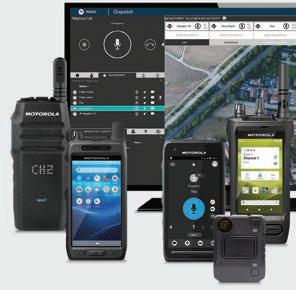

T 033 3939 0022 E sales@radiocoms.co.uk Connect with us www.radiocoms.co.uk Let’s start a conversation. Bringing your team closer together Communication devices and software to keep your team connected, safe and efficient regardless of their location.

In 2022-23, 40 people died from workrelated falls from height in the UK, making it the largest cause of at-work death. Comprising 30% of all workrelated fatalities, falls from height remain a consistent danger (GB Health and Safety Executive (HSE), 2023).
In December 2023, the HSE fined Mitie Tilley Roofing Ltd £881,000 when two workers fell through roofs and sustained life-changing injuries. The risks were deemed not to have been thoroughly assessed, but according to Peter Bennett, chair of Access Industry Forum (AIF), not only are accidental falls from height stubbornly persistent, but real incident numbers are likely to be much higher.
‘2024 marks 50 years since the Health and Safety at Work Act, when it was estimated there were 40 times the amount


of deaths from falls from height than there are now,’ says Peter, who was instrumental in creating the UK All-Party Parliamentary Group on Working at Height, and is chair of the No Falls Foundation. ‘There’s been improvement, but the number of deaths appears to have plateaued, and given it’s estimated just 30% of reportable accidents are even logged with the HSE (officially
Falls from height data still leaves many questions unanswered, but can technology make a difference to persistent incident and fatality rates?

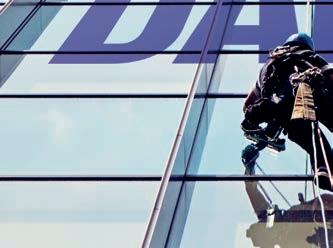
non-fatal injuries from falls from height are only 8% of the total), we are bereft of the type of data the industry needs to understand why falls from height continue to happen, and how they can be prevented.’
 WORDS PETER CRUSH
WORDS PETER CRUSH
Peter’s long-standing gripe is that HSE stats – a product of Labour Force Survey data supplemented by Reporting of Injuries, Diseases and Dangerous Occurrences Regulations (RIDDOR) data – doesn’t adequately illuminate the state of play.
‘We don’t have sector/job-level data but, more importantly, even causation is sketchy because a RIDDOR report is freetext, meaning crucial “how and why” detail is dependent on the depth to which the incident is written up,’ he says.

‘I’m campaigning for a simplified and standardised drop-down menu of causes that could be selected, and which would





MAY/JUNE 2024 | IOSHMAGAZINE.COM 50 THE PRACTICE WORKING AT HEIGHT

then provide meaningful data that could be sent to AIF associations and distributed to their members for any potential trends to be addressed.’
Technology to the rescue?

Compare this to places like Singapore, where there is much more precise data, and he has a point. Between 2006 and 2012 in Singapore, 51% of all fatal accidents, for instance, came from the construction sector, while 34% of fatalities were from falls from height (Anantharaman et al, 2023). Both levels are high, but this was an improvement on the 60% and 38% levels respectively in 2006-07.
Data there is also more granular –falls from scaffolding, formwork and platforms and landings are logged



as distinct from falls from a building, mezzanine, loft or roof, while falls from elevating work platforms are a different category to falls from ladders, steps or stairs. Days of the week are also included (most happen on Wednesday or Thursday), as is time of the day, and what heights people fell from: the average is 3.19 metres (Anantharaman et al, 2023).
According to Hannah Williams, charity manager at the No Falls Foundation, data like this would be transformational: ‘Our objective is understanding why falls happen,’ she says. ‘We’re about to launch our own UK-first research project to determine just this – from people who have experienced, witnessed or investigated a fall from height.
‘We want to know, for instance, if there’s an issue with equipment, lack of training for heightbased work, or if risk assessments weren’t clear. There’s no such thing as an acceptable level of deaths – and anecdotally we know the majority of accidents could have been avoided.’
Risk management technology
But most technology investment seems to be flowing towards assisting in and standardising risk management, because it’s a cavalier attitude to risk and failure to assess jobs properly that many think is the root cause of at-height accidents.
Lisa Alderson-Scott runs Safetynet Solutions, a contractor management system that collates insurance documents, risk assessments, working at height permits and other key data before workers are even allowed near a project.
ANECDOTALLY, THE MAJORITY OF ACCIDENTS COULD HAVE BEEN AVOIDED
In the absence of hard causation data, the prevailing thought is either taking height out of the equation altogether, or having workers better protected when working at height. And on both counts technology is increasingly helping.
Drones are already well known for reducing the need for people to work at height. Perceptual Robots recently revealed that it had successfully inspected more than 250 onshore wind turbines in Scotland, for example.
But now technology is going one step further. Tech company Aerones has developed robots capable of actually cleaning turbine blades, removing human presence at height entirely. Other technological advances include broader ranges of prefabricated building elements, so they don’t physically need to be bolted together at height.
She says: ‘It’s the audit, compliance and creating RAMs [risk assessment modules] where technology can impact safety, because often it’s the person doing the work that isn’t always clear about the RAMs agreed, and this disconnect can create risk.’ By creating a job type, requiring known risks to be inputted, sign-off to start work can be rejected until all necessary elements are there. There are even addons that can measure windspeed, while cameras can be linked to it to notify and corroborate who is actually up a platform, or building.
‘In the real world, things get missed or rushed,’ she says. ‘This is about designing each job with more intent.’
Managing mindsets
Andrew Lee, safety officer and chairman of the Federation of Window Cleaners, concurs that accident prevention is as much about mindset than anything else: ‘Human error is nearly always to blame,’ he says.
‘Accidents happen due to not following procedure, like not using a stepladder instead of a free-standing ladder, because it’s too much hassle to get it off the van.
‘It’s frustrating, because there’s all the training in the world about securing ladders at their lower and upper fixing points, or creating equivalent effectiveness using stabilising bars, but there’s often a mindset from someone that they’ve done this type of job many times before, they become
IMAGE: GETTY
51 IOSH MAGAZINE
Promote and enable the safe, effective use of powered access worldwide
PAL Card now available on IPAF’s ePAL app www.ipaf.org/ePAL

Certified IPAF PAL Card is proof of platform operator training to the highest standard.
Available as eLearning or instructor-led course

Regularly audited to ensure the highest standard of training is delivered

Online verification of PAL Cards: www.ipaf.org/checkpal

Smart technology & fraud protected
Courses available in multiple languages
Optimal instructor-tocandidate ratio

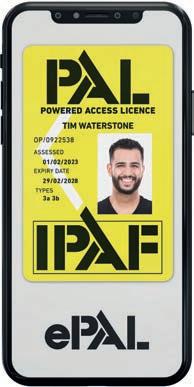

Annually reviewed by the industry to ensure relevant and up to date content

Complies with legal requirements
Focus on safety & efficiency

40 years of industry experience
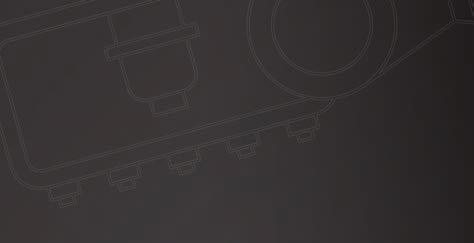
Comprehensive range of training courses
Used by manufacturers of equipment worldwide
Operator theory module can be taken remotely via eLearning
Reassurance: A valid PAL Card proves the holder has passed an approved and audited IPAF theory and practical test within the past five years

The IPAF Powered Access Licence or PAL Card is recognised worldwide across industries as proof of platform operator training to the highest standard. It is issued by the International Powered Access Federation (IPAF) to platform operators who successfully complete a training course and pass a test at an IPAF-approved training centre. Ask for the PAL Card as proof of operator training! Now available digitally on the ePAL app.
Safe. Audited. Internationally recognised. Find your nearest IPAF approved training centre at www.ipaf.org







complacent and consider themselves to be immune to the risk.’
Tech in the window cleaning business comprises equipment like water-fed and telescopic poles, but even these, claims Andrew, are not silver bullets (users are on the ground but often can’t see if they’re cleaning properly). In fact, he argues that they create entirely new safety issues – such as manual handling injury, the potential for them to crash down on people or vehicles, or for trailing hoses to cause trips and slips. Other tech does exist. For example, nLink recently showed off ‘RoboLift’, a concept boom lift, complete with tool integration – such as a hot water pressure washer – that can clean building facades. But as Andrew adds: ‘while it will always be safer to use a cherry picker, it’s not always reasonably practicable for many jobs if a ladder would be suitable.’
The drive to harness technology to improve risk-assessment has also seen the Prefabricated Access Suppliers’ & Manufacturers’ Association (PASMA), develop TowerSure – an app that requires workers to inspect and complete a digital checklist and upload a geopositioned image prior to using mobile access towers, to capture information on what equipment people are using, what heights they are working at, what jobs are being done, and if users have assembled the equipment correctly. The first ever UK No Falls Week (13 to 17 May) will also be launched by the No Falls Foundation – a major campaign where organisations who work at height can access a range of toolkits, videos and training materials in order to focus on work-at-height safety.
When accidents do occur
Other technology exists that won’t prevent a fall, but will at least alert overseers if someone has suffered a fall, and could be injured or dangling and at risk of further injury. These include solutions that use accelerometers in workers’ mobile phones to register sudden movements. Rob Gilbert, managing director of one such provider, Totalmobile, says: ‘Using our app,
IN NUMBERS
30%
Falls from height represent 30% of all work-related fatalities in the UK
In Singapore, 34% of workrelated fatalities were from falls from height
40
40 people died from work-related falls from height In 2022-23 in the UK
13-17 MAY
34% 40x No Falls Week
a working at height task can be logged, and alerts are raised if people are measured as being outside of normal orientations.
‘It doesn’t eliminate an accident, but it adds another level of safeguarding. It’s tech PPE. An added advantage is that incidents – which may otherwise go unreported – will now be logged in real-time. So if the same people are repeat offenders, this can be spotted and training given.’
At CAN (part of RSK Group), a rope access company whose workers will routinely be up at height stabilising slopes, working on wind turbines, inspecting bridges and installing football stadium lighting, SHEQ director Galina Hobson has taken the approach that sufficient project planning, aimed at minimising consequences of a human error (sometimes using tech solutions like drones for inspections) is the best form of defence.
At the same time, she also ensures high levels of competency of personnel working at height. For example, in the Industrial Rope Access Trade Association, 1000 working hours must be accumulated by the worker before moving to the next level, which comprises four days of training and one day of assessment.
‘The reason incidents happen are nearly always human factors,’ she says. ‘One of the main principles of a human and
There were 40 times the amount of deaths from falls from height before the Health and Safety at Work Act (1974)
30%
It is estimated that just 30% of reportable accidents are even logged with the HSE
organisational performance approach is that everyone can make a mistake. But minimising the consequences of a mistake is what’s important. Another risk that we need to recognise and address is complacency. When people have done a job 1000 times, their awareness of risk can decrease.’
Galina observes that most people tend to notice other people’s mistakes rather than their own, so it is important to encourage people to look after each other. She adds: ‘It is also important to share our professional knowledge with clients as sometimes they might not understand the safety assessment we’ve made and precautions we suggest. We also see it as our responsibility to educate them why we see risk as we do.’
So will incident/fatality levels start to go down again and can technology really help to do this? Many are hopeful, but they also add that technology shouldn’t be a crutch which creates a false sense of safety.
‘Everyone has a role to play,’ asserts Peter. ‘Architects can design out the need for working at height; standards can all be looked at, training can be done, but it’s what happens when people are actually on-site that matters. It’s how that’s planned, managed and controlled.’
For an in-depth look at ongoing research into falls from commercial vehicles, see page 54.
53 IOSH MAGAZINE THE PRACTICE WORKING AT HEIGHT
ZERO FALLS A vision for
Prevention experts in Germany are analysing data on slips and trips from commercial vehicles to find new ways of reducing accident rates. Here are their findings so far.
WORDS JOHN WINDELL
Driving a commercial vehicle can be a dangerous occupation. Whether it’s a haulage lorry or waste collection truck, the risks are many and varied. But those risks are not necessarily confined to the road and the routine daily hazards of negotiating heavy traffic and other travelling conditions. In fact, one of the riskiest times for drivers is when the vehicle is not even on the road, but when it is standing still, either at the base of work or at the delivery or collection location. This is the point when the most common risks for commercial vehicle operators come into play – slips and falls from the vehicle.
In a bid to understand how often these incidents occur, what causes them and how they might be mitigated, the German accident insurance institution BG Verkehr has been collating national data for the years 2013 to 2020. Across that period, it has recorded an average of 59,000 work accidents every year. Ten per cent of those accidents (around 5900) were falls and, of those, 64% (around 3700) were falls involving commercial vehicles.
The project to track the incidence of falls from commercial vehicles began
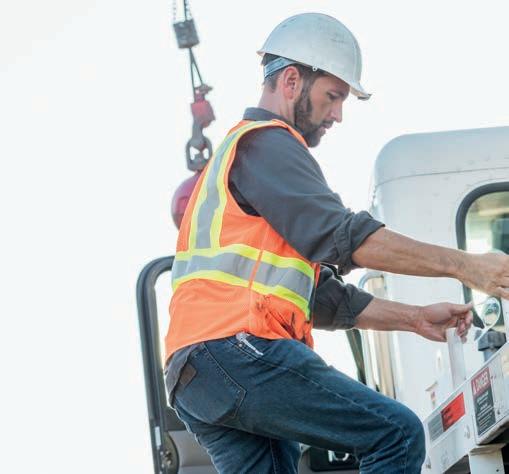
THE PRACTICE CASE STUDY MAY/JUNE 2024 | IOSHMAGAZINE.COM 54 In Germany, 64% of falls at work are from commercial vehicles
Initial findings from the BG Verkehr research
Accident figures for Germany, 2017-22:
• Of 59,000 reportable accidents a year, 10% are falls (5950) – 64% of those (3700) involve commercial vehicles
• Road haulage accounts for around three-quarters of falls, followed by waste collection
• The biggest risk area is the loading platform (48-59% of accidents),
followed by the driver’s cab (20-25%)
• Most accidents result in four to seven days’ absence (39-48%), followed by eight to 21 days (18-33%).
More than 42 days: 10-20%.
Falls and slips often occur when:
• Getting in and out of the vehicle
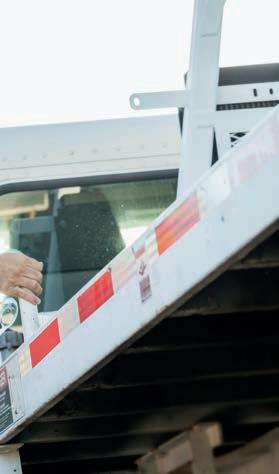
• Working on the loading platform
• Working on vehicle superstructures.
Vehicle risks include:
• Cleaning the windshield, front and rear cameras
• Climbing on ladders
• Loading and unloading, load securing
• Removing snow and ice
• Getting in/out of the cab.
in and out of a vehicle; and losing grip or balance and falling when moving around the vehicle superstructure. Within each of these broad types of accident are a range of smaller variations that make the category of ‘falls from commercial vehicles’ a very complex one.
Drilling for data
The BG Verkehr statistics reveal that the trade with by far the biggest percentage of falls from vehicles across the sector is road haulage (an average of 78% of the total from 2013 to 2022) with waste collection a distant second (an average of around 8.5% of the total). They have also revealed that the loading platform is the location of most accidents (an average of 53% of the total), followed by the driver’s cab (an average of 23%).
with BG Verkehr’s commitment to make a meaningful contribution to the international Vision Zero campaign. But the insurance institution covers a breadth of concerns across commercial transport, postal logistics and telecommunications, including air traffic and shipping, so where could it best concentrate its efforts?
‘We had a range of discussions about it and looked at different trades that are insured with us,’ says Dr Nadja Schilling, head of the department of research and projects in the OSH directorate of BG Verkehr. ‘We looked at different statistics, talked to our experts, labour inspectors and so on.’ After several rounds of prioritising the ideas put forward, they decided on topics that they felt warranted working on more intensively. ‘One of those was falling from trucks,’ says Nadja.
The data collection that emerged from that commitment quickly revealed the true nature of this type of incident. ‘We figured out pretty quickly that it’s not one kind of accident,’ says Nadja, ‘but that it’s an array of accidents.’
That array includes slipping, stumbling or falling backwards when securing loads; losing footing and falling when getting
These accidents cause a range of injuries to the shoulder, arm and wrist (27%), to the hip, leg and knee (18%) and to the chest, back, stomach and pelvis (17%). As Nadja points out, these are just the main types of injury. ‘They can range from a little sprain that only needs one or two days of absence to people falling and hurting their heads and needing much longer periods off work. Sometimes, the problem is that the distance they fall is fairly short and they usually cannot catch themselves, and so they just drop to the ground. Some of the injuries are rather expensive because they need a lot of rehabilitation, aside from the harm they cause to the person and their families.’
Having determined the extent of the problem of falls from commercial vehicles, the next job is to understand why they are happening, and what further measures can be implemented to help prevent them. That step requires the gathering of deeper and more nuanced data.
‘We produced two special surveys to find out the reasons for these accidents,’ says Michael Fischer, from the BG Verkehr research and projects department in the prevention division. ‘So the labour inspectors investigating the accidents were asking not just about the accident,
IOSH MAGAZINE 55
IMAGE: GETTY
but about the company culture. Do they take care of their people there, do they have an OSH management system to find out what’s dangerous, measures to prevent accidents in place, and so on? We have about 240 surveys with lots of data and that is how we are trying to find out what exactly was going on.’
As Nadja explains, the six-page special surveys have been designed to build a much richer picture of the circumstances and variables surrounding the incidents.
‘The standard accident investigation would collect roughly about a third of that kind of detail,’ she says. ‘But with the special survey, we are now really digging into the specifics. That’s something that you can do for a certain amount of time, but you can’t do it for every accident. So we decided we would do it for one calendar year. Every accident with more than three days of absence from work is the kind that we need to be notified of. Every accident that we get notice of is going to be investigated by the labour inspector using that special survey. That’s how we collected over 200 surveys in one year.’
The rule of seven
The qualitative data is collected during the second half of the special survey. This begins by looking at how safety and health is organised by the company involved. Then inspectors give their personal assessment of the company, focusing on areas such as the quality of leadership in safety and health, the overall corporate culture, communication around safety, the standard of training and the procurement of equipment.
‘That was a little bit of an experiment for us,’ says Nadja. ‘We included questions about the company culture because usually the investigations are
VISION ZERO APPROACH
Seven golden rules
Take leadership Identify hazards
more focused on the technical details than these “softer” topics. So we included a number of questions where we asked the labour inspectors to give their impression about the company where the accident happened. And those questions are organised according to the seven golden rules.’
The seven golden rules are a fundamental part of the Vision Zero approach, which aims to have a transformational effect on safety, health and wellbeing at every level of an organisation’s work. The rules are designed to provide a practical foundation for improvements: take leadership; identify hazards; define targets; ensure a safe and healthy system; ensure safety and health in machines, equipment and workplaces; improve qualifications; and invest in people.
Although the seven rules are based on familiar concepts, integrating them into the investigation was an unfamiliar step for the BG Verkehr team.
A fresh approach
‘This has been a pilot for us,’ explains Nadja. ‘What the seven golden rules give you are seven specific fields that labour inspectors can look into to help the company improve their culture of prevention. Many of the inspectors are not yet systematically using them in their daily activities when they go into companies and talk about prevention, so it’s a new approach for us to work like that.’
Now that this data has been collected from the 240-plus incidents reported, the task in hand is to analyse the responses and look for the deeper patterns and revelations.
‘We have two lines of analysis at the moment,’ says Nadja. ‘One is a standard description of the data, what happened, how many times it happened, how many
THE PRACTICE CASE STUDY 56
MAY/JUNE 2024 | IOSHMAGAZINE.COM
Define targets Ensure a safe and healthy system Improve qualifications Invest in people Ensure safety and health in machines, equipment and workplaces
times this and that box was checked.
‘We are in the midst of comparing that sample to our bigger picture data to check whether our sample is representative, so we can say if this is typical for the kinds of accidents we observe annually or not.’
Then the objective of the second line of analysis is to look for combinations of factors and see if patterns are emerging which help to throw more light on the range of accidents that are happening, where they are happening, when they are happening, and the circumstances that lead up to them. Both lines of analysis are currently being carried out in collaboration with people who, says Nadja, ‘are more qualified in statistics than we are’.
The research is working towards the point where appropriate new preventative measures can be identified and implemented. However, reaching that goal won’t necessarily be straightforward, says Nadja. ‘When we look at preventive measures, we usually start with technical measures. Then we look into organisational measures and how work is carried out in terms of procedure. Then there are the personal protective measures. But we are already pretty good at those. So it seems like there is another problem here. It’s one thing if a handle is broken, but not using the handle is a behavioural issue.’
actually use the handle,’ says Nadja. ‘And finding out why, for example, some drivers might feel it is “uncool” to wear a safety vest or the proper shoes.’
A nudge in the right direction
THE TASK IN HAND IS TO LOOK FOR DEEPER PATTERNS IN THE DATA
This issue of behaviour, or acceptance, requires different measures and solutions, such as nudging people to do the right thing. This is where Nadja believes the Vision Zero approach can complement the more traditional approach that is focused on finding new technical or organisational answers. She suspects that a mix of different preventative measures will emerge from this bid to effect further change. This hope for change sums up the ultimate question for the analysis as it progresses: how to further reduce the number of accidents that are already at an historically low rate thanks to the implementation of safety and health measures?
‘They have gone down over the last decades, they’re on the bottom, but then how do you get to that last little bit,’ says Nadja. ‘That’s the human being, human nature, and I think that’s where the Vision Zero approach has a new way of looking at it and can be powerful.’
While the Vision Zero approach is a cultural shift for BG Verkehr, the research may set a new tone for the wider industry.
In this sense, the Vision Zero approach is a bit broader and potentially more sustainable because it takes a closer look at the whole culture of prevention rather than just insisting that, for example, all handles are checked every three months.
‘It’s more focused on how we get people with different approaches to
‘It is a change for us all,’ says Nadja. ‘This kind of approach is about looking into one topic in a more detailed way and then coming up with new approaches in our preventive work that reaches into new areas and hopefully helps to get those numbers of accidents down that little bit more.’
Further results will be reported in future issues of IOSH magazine
Timothy Pearson, head of transport health and safety at
Wren Kitchens and member of IOSH’s Retail and Logistics Group
‘It’s great that somebody is doing this type of research. We’ve been working hard to find solutions to prevent these sorts of falls. We’ve had people falling out of cabs if they don’t do the three points of control and they miss a step. Human error is still a massive factor.



The number of people falling is small, but when it happens you’re more likely to get higher-end injuries. We’ve had broken arms and collarbones, head injuries.
‘The cultural questions are important. What is the leadership? What is the training? I’d love to see more work in this area. I’ll be interested to see the final results of this research and see how we compare.
‘It’s about trying to bring that stubborn rump of accidents down even further. It’s the little things that make a difference. This work highlights the issue. It will get people thinking and talking, and perhaps that will make a difference and lead to more research and better outcomes.’
IOSH MAGAZINE 57
BUSINESS
ELEVATE OSH IN YOUR ORGANISATION

THE ART OF PEER SUASION
In the aftermath of a serious health and safety incident, finding out why procedures and policies have been ignored can help us make the right changes to keep workers safe in future.
MAY/JUNE 2024 | IOSHMAGAZINE.COM 58
WORDS PAUL VERRICO, HEAD OF EVERSHEDS SUTHERLAND EHS TEAM, REBECCA UNDERWOOD, LAWYER AT EVERSHEDS SUTHERLAND, AND NEIL CATTON, FORMER VICE PRESIDENT AT STERLING SAFETY & RISK SERVICES LTD
to a culture of safety where individuals feel empowered to engage in behaviours that promote workplace safety.
Social cognition theory suggests that individuals will adjust their own behaviours to mirror those they perceive as socially acceptable within the group. While a range of factors are at play, Röttger et al found that the most important influence
on a front line worker is that of the immediate supervisor – and, by extension, that of peers in a work party (Röttger et al, 2017).
One of the biggest laments (and one of the most difficult conundrums to resolve) after a serious incident is understanding why an employee or contractor failed to follow a procedure, took a shortcut or disregarded a work instruction. Good organisations invest heavily in policies, procedures and training and rely upon these to keep people safe. Yet weak cultures, team silos and personal circumstances can conspire to cause even the most diligent worker to make mistakes.
In a workplace setting, social group norms refer to the shared expectations and beliefs within a team or organisation regarding acceptable behaviours. These norms are influenced by the perceived approval or disapproval of important individuals such as supervisors and co-workers. Effective leader-member relationships play a critical role in shaping these norms, ultimately leading

constitutes correct behaviour (Cialdini, 2021). An action which derives from similar others increases a person’s confidence, proves the action valid and, ultimately, socially acceptable should that action be performed (Cialdini, 2021). As such, a person is ‘peersuaded’ and influenced by those they see as similar to themselves.
THERE IS NO DOUBT THAT PRESSURE TO CONFORM IS NOT ONLY POWERFUL BUT HARD TO RESIST
There is no doubt that the pressure to conform and do what others are doing is not only powerful but is also hard to resist. In a health and safety context, there are times when the influence of one’s peers can be instrumental in creating powerful, long-lasting change. However, if this is not harnessed correctly, ‘peersuasion’ can have serious, and sometimes fatal, consequences (Cialdini, 2021).
This article examines the role of peers and the powerful influence they can have in a workplace by adopting and advocating the work of Dr Robert Cialdini. His work is often cited in a sales context, but the science of getting people to say yes is incredibly useful, if that yes is to working safely.
Copying others
Social proof is the concept that people look to the actions of their peers, copy those actions and emulate that behaviour. In his book Influence, Cialidini reasons that people have dual needs: the need to foster social acceptance and escape social rejection (Cialdini, 2021). One way to satisfy these needs is to act the same as your peers. This is achieved by observing the people who you deem are most like yourself. It is that conduct which gives a person the greatest insight into what
To test the validity of the social proof theory, one experiment tasked actors with looking up into the sky to see whether their actions would be copied by unknowing bystanders. The experiment evidenced that bystanders would also look up to the sky without hesitation even when there was nothing there (Milgrim et al, 1969). This has also been emulated in a work setting where a study found that employees were more likely to engage in information sharing when they saw it modelled by coworkers rather than their managers (Cialdini, 2021).
‘Peersuasion’ applied
Where negative health and safety practices are adopted by one employee, this can have a snowball effect on the rest of the organisation, obviously depending on the context of the workplace and potential weaknesses in its OSH culture. For example, it is not unusual to observe colleagues failing to maintain three points of contact on a ladder while working at height, choosing not to use ear defenders when required or, indeed, walking too close to a moving vehicle.
In a recent Eversheds case involving lock-out, a worker tragically lost his life by overriding a Castell key system and working on energised machinery using a duplicate key. Our investigation revealed that virtually every fitter at the plant had a set of duplicates. The written policy was for one master set; there was a sophisticated lock-out/tag-out system that appeared effective. Because it was locally accepted, new employees quickly became inured to the risks of sudden start-up,
IOSH MAGAZINE 59
IMAGE: GETTY

and system deviation became the norm. Attempting to blame the individuals in those circumstances would have been entirely inappropriate, although central management was completely blind to the workaround.
When workers deviate from a system and that behaviour is observed by another, the action is validated and the behaviour is seen to be correct. Given the need for people to feel socially accepted by their peers, the observer is likely to adopt this behaviour and the cycle inevitably continues in a reinforcing loop. In his seminal text Sherwood (2002) advises leaders to look at the forest (the system) rather than the trees.
It is therefore essential that organisations recognise quickly when negative health and safety behaviours occur and seek to curtail them at the source, whether that is an organisational or an individual source. Most organisations regularly hold health and safety committee meetings, toolbox talks and town hall gatherings that employees attend. Those who volunteer to take part usually have a natural interest in health and safety and are keen to engage; however, if these voluntary attendees do not hold the power to persuade their peers or are not leading by example, long-lasting and effective change will be difficult to fully implement.
UNSAFE BEHAVIOURS MAY BE ADOPTED BY OTHERS TO BECOME A REINFORCING LOOP
Adopting Cialdidi’s research, it is imperative that an organisation identifies those employees who have the ability to persuade and influence their peers as safety ambassadors. People will follow the lead of others that they respect. Simple, informal observations of people at work doing their job, having conversations on their lunch break and/or around the office will quickly identify those characters to whom people naturally gravitate. Once those individuals have been identified, health and safety practitioners should begin to engage them in open communication to gauge their views on safety, current workplace practices, current employee attitudes and any barriers towards safety, and importantly, to explore their own health and safety practices. Also, senior management’s active involvement and commitment to safety is critical in order to create a culture where safe behaviour is valued and promoted.
Allowing these individuals to have the space to discuss their views with the organisation’s health and safety practitioners openly, privately and without fear of reprisals will help foster a psychologically safe working environment. It will also begin to lay the foundations of mutual trust and respect. Once these views have been obtained from a number of key individuals, the safety practitioners can then work together with senior leaders to formulate a plan on how they can meaningfully engage these individuals to persuade them to positively ‘peersuade’.
Courageous conversations
One of our clients recently engaged with IOSH vice-president Neil Catton to develop a bespoke supervisor engagement class. Neil arranged a series of personalised training sessions and focused on having courageous conversations to enable supervisors to feel better able to speak out when they witness poor workplace behaviours. Those conversations were then played out in ‘real life’ with Neil coaching the supervisors. Neil shared with us some reflections on the class.
‘What was very obvious when I first engaged directly with the supervisors was that most really did want to stay safe and that they really looked out for each other,’ he says. ‘However, the supervisors felt that they were trying to implement a safety management system that was not only difficult but bore no relation to the ‘real world’ in which they were operating. As a result, they were seeing both good and bad habits regularly transferring across peer groups as ‘workarounds’. These workarounds were not reflective of the official rules.
‘By engaging with the supervisors in a trusted, confidential space I was able to discuss these concerns and frustrations and assist them in navigating these issues. We were then able to clarify collectively what the practice should be and how to implement this effectively on the ground. This created a clear shift in engagement and ownership towards safety and their safety responsibilities. Following our discussions, the supervisors were tasked with taking the right behaviours back onto the shop floor and trying to make
IMAGE: GETTY MAY/JUNE 2024 | IOSHMAGAZINE.COM 60 THE BUSINESS INFLUENCE
the changes discussed to safety practices.
‘Importantly, allowing employees to have a confidential space to air their thoughts meant that additional concerns were raised relating to how safety was practised on site. This allowed me to take these directly to the top of the organisation. As a result of our tailored sessions, genuine change happened. Real listening was at the heart of this programme and it allowed supervisors to feel that they could make a difference.’
In an age where the focus of culture transformation is on the C-suite and senior leaders, perhaps now is a worthwhile ‘step back’ moment to consider whether the supervisor/front line interface would be a sensible focus for next year’s safety strategy. Whilst the investment costs can seem significant, in mature organisations with low staff turnover such an approach may have significant benefits.



‘Peersuasion’ strategy
Addressing peer pressure for unsafe behaviours in workplaces requires a holistic approach that considers various contextual factors and intervenes at multiple levels of the organisation. In an organisation with a good culture, everyone puts health and safety high on the list, sharing accurate perceptions of the risks and adopting the same positive attitudes to health and safety.
Considering what we have explored, a powerful first step would be to ask supervisors to do something small or easy without any repercussions if they cannot meet the request. Edmondson (2018) would describe this as a ‘psychologically safe’ environment. A small request would be asking the supervisor to invite three peers to attend one health and safety committee meeting or take back a health and safety announcement to the working floor. If they agree to do this, and successfully
meet the request, this develops a sense of commitment and confidence. It begins to breed enthusiasm for the next, bigger request as these individuals are complying without pressure (Freedman and Fraser, 1966). The outcome is that if the influential person is seen to be acting a certain way, so will their peers as there is an overwhelming need to emulate the behaviour of those we respect.
Small and steady changes in the health and safety sphere undoubtedly lead to big wins. The first step is to recognise that an employee’s peers are the most powerful tool for any health and safety practitioner. It is imperative that key players are identified, open communication is had and they are encouraged to engage in small, moderate steps that will help shape long-lasting change.
For references, see ioshmagazine. com/peersuasion
HAVSco developed the first personal Hand Arm Vibration dosimeter, which measures and records the actual vibration exposure at the point where the vibrations enter the hand, when using power tools.
The HAVSense dosimeter measures real exposure with no programming or changing data when swapping between tools.
No need to rely on inconsistent manufacturer’s datairrespective of which tools are used, how they are used or what they are used for.
Havsco developed the first personal Hand Arm Vibratio dosimeter, which measures and records the actual vibration exposure at the point where the vibrations enter the hand, when using power tools. No reliance on inconsistent manufacture’s data, irrespective of which tools are used, how they are used or what they are used for, the HAVSense dosimeter measures real exposure with no programming or changing data when swapping between tools. No guesswork, calculations or time recording, just simple HAV exposure measurements.
Havsco developed the first personal Hand Arm Vibration dosimeter, which measures and records the actual vibration exposure at the point where the vibrations enter the hand, when using power tools. No reliance on inconsistent manufacture’s data, irrespective of which tools are used, how they are used or what they are used for, the HAVSense dosimeter measures real exposure with no programming or changing data when swapping between tools. No guesswork, calculations or time recording, just simple HAV exposure measurements.
No guesswork, calculations or time recording - just simple HAV exposure measurements.
Measure personal exposure from tools, tasks, processes or even products, empowering you with real exposure data entirely to suit your operations and requirements.
Measure personal exposure from tools, tasks, processes or even products, empowering you with real exposure data entirely to suit your operations and requirements.
Measure personal exposure from tools, tasks, processes or even products, empowering you with real exposure data entirely to suit your operations and requirements.
Contact us for a free, no obligation demonstration at your location.
Contact us for a free, no obligation demonstration at your location.
Contact us for a free, no obligation demonstration at your location.


HAVSco Ltd - 01692 400635 - tech@havsco.co.uk - www.havsco.co.uk
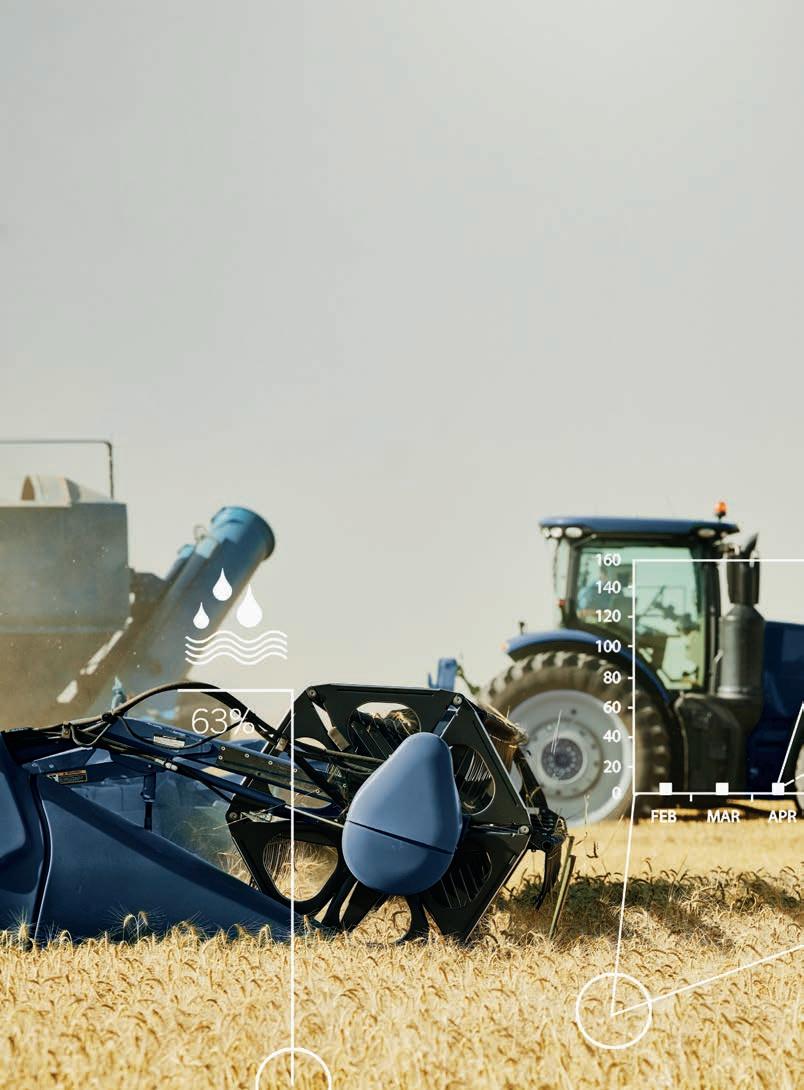
SOWING THE SEEDS OF CHANGE
Will technological advancements in the agricultural industry also improve health and safety?
WORDS PETRA MARTIN
MAY/JUNE 2024 | IOSHMAGAZINE.COM 62 THE BUSINESS AGRICULTURE
As the Greek philosopher Heraclitus once said: ‘Change is the only constant in life.’ Farming methods have evolved hugely over the years, and embracing modern methods enables farmers to achieve the highest potential for their business. While the uptake of digitisation has been slower than in other industries (Calvino et al, 2018), there remains steady movement through the farming community. The drive for carbon-neutral farming is accelerating change both in the UK and globally.
One thing that never seems to change is agriculture’s nature as a high-risk industry. From chemical exposure and musculoskeletal strain to isolation and stress, there are many physical and psychological risks faced by agricultural workers. In Great Britain you are, on average, six times more likely to die on a farm than you are on a construction
site, and this statistic is proving to be a constant (GB Health and Safety Executive (HSE), 2023). The picture is similar when you look at fatality data in a global context.
A number of technological trends are shaping the future of agriculture. These include precision farming, digitisation, machinery developments such as GPS systems and smart machinery, robotics and artificial intelligence, natural pest control methods, and plant genetic improvements that reduce the need for pesticides and fertilisers.
The impact of these progressive technologies is mixed. Increased production and yields, reduced production costs, improved product quality, traceability and food safety, better animal welfare and environmental enhancements are all good news. Less often considered is how these advances may affect the safety and wellbeing of people working in agriculture.
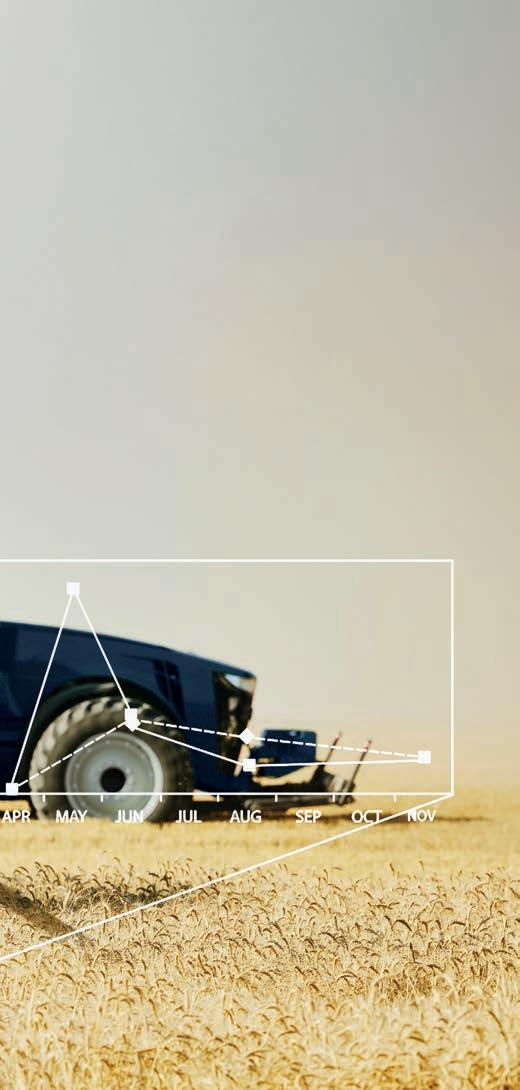
There are historical precedents to learn from when it comes to considering the potential side effects of innovation in agriculture. One of the simplest examples would be the introduction of modern machinery, such as tractors and combine harvesters, replacing horseor human-powered equipment. Huge advances in efficiency have resulted from this, and reductions in hard manual inputs have significantly reduced the impact on the physical health of farm workers. However, agricultural vehicles and machinery have resulted in six fatalities in the UK in the period 2022-23 (HSE, 2023).
Online initiatives
Having quick and easy access to information, tools and resources online provides a wealth of opportunities to make farming easier and more efficient. Farming forums and sharing information can offer support remotely, and the answer to a technical question is never far away these days.
The same can be said for communicating information and initiatives focused on farm safety, both physical and psychological. Access to support and guidance has never been easier. With the suicide rate among UK farmers one of the highest across all industries (Office for National Statistics, 2022), raising awareness of mental health on social media may just help open up a topic that has always been taboo. Can social media start to change the culture?
The online and app-based world can also be used to great advantage in reducing the risks associated with lone and remote working. Even just using the in-built location services in a smartphone means you can direct assistance to a remote location far more easily than ever before. Add in location apps, such as What3words, and the process of sharing a location is further simplified –whether for your chemical delivery point or to get emergency services to the right spot in a particular field.
There is also a range of lone worker apps that are increasingly powerful and can act as a ‘digital buddy’.
IOSH MAGAZINE 63 IMAGE: GETTY
Precision planting
Satellite technology, weather stations, drones and data analytics are all components of precision agriculture. Satellite technology can be used to collate and process plant colour and soil reflectance data to determine organic matter, moisture and clay content in the soil. This information allows farmers to understand their crops’ requirements at a minute level – they can therefore adapt, and generally reduce, crop protection treatments and fertiliser applications, and vary seed density to minimise inputs and resource requirements, all from within a mobile app.
Precision farming provides huge potential for farmers to deliver a more sustainable and productive operation, but does it also improve safety?
The amount of pesticides used in the UK has reduced significantly since the 1990s. For example, there was a 21% decrease in pesticides applied to arable crops between 2012 to 2020. However, over 12,000 tonnes of pesticides are still applied to UK crops annually (HSE, 2021).
The use of pesticides in the UK is heavily regulated, with strict standards for manufacture, storage, transportation, application and maximum residue levels. Products are constantly being reviewed and the more hazardous chemicals removed from the authorised product database. Yet, even with the strictest of controls, some risks remain. Precision farming tools allow farms to vastly reduce agrichemical use by early identification of pests or disease and by precise chemical application; this may reduce the health impact for the spray operator at the farm.
Unmanned aerial vehicles (UAVs)
UAVs or drones are increasingly being used for crop spraying (although, at the time of writing, not yet in the UK), monitoring crops, mapping farm land and even livestock monitoring. Picture this future – a drone, mounted with a multispectral camera system, takes off early in the morning, locates a pest or disease problem out in the fields, and reports back to the farmer while he’s
still having his coffee. The data enables early identification of a problem and pinpoints the location accurately, allowing specific, and localised, application of plant protection products or herbicides. Drones are also capable of crop spraying – both widespread spraying by fixed-wing UAVs and more targeted spraying by multirotor drones.
As well as improving the precision of spraying and making the process autonomous, drones can spray topography and ground conditions that are difficult and dangerous for a traditional manned boomsprayer to access. Removing the human spray operator from the process also eliminates the potential direct exposure to chemicals.
In countries where spray-capable drones are already licensed and used successfully, manufacturers claim a reduction in pesticide use of up to 40%. The reduction in volume of chemical sprays is a clear benefit; additionally, the increased efficiencies are likely to lead to time saving and potentially a better work/life balance for the farmer.
Another application of drone technology that has a direct impact on safety is the use of these devices for inspections of confined spaces such as grain silos. Inspections are a critical component of keeping a grain storage facility running safely and silos can be huge structures that are difficult and expensive to inspect. Traditionally, scaffolding or rope access systems would need to be used, which can be timeconsuming, expensive and involve a working at height risk. Drones, however, can be used to inspect the inside of silos (and other difficult-to-access areas on farms), identifying faults quickly without the need for lengthy planned maintenance shutdowns or people working at height.
As drones are only suitable for areas without DSEAR-rated (Dangerous Substances and Explosive Atmospheres Regulations) explosive environments, silos must be cleaned before inspection.

MAY/JUNE 2024 | IOSHMAGAZINE.COM 64 THE BUSINESS AGRICULTURE
Automation impacts
Robotics have increased output speeds while decreasing manual labour across most industries worldwide. The application of robots in agriculture has a long history: robotic milking machines, for example, have been used for almost 30 years, with farmers reporting better work/life balance and improved working conditions as a result (Barrett and Rose, 2022).
Advances in robotics and AI continue to focus on how to perform the job of a human quicker and to a better standard, whether it’s picking strawberries in glasshouses or scheduling a top fruit harvest out in the orchards. Jobs that robots perform better involve repeated, rapid movements such as picking, packing and quality checking –all of which are labour-intensive and can result in a high incidence of musculoskeletal disorders if not carefully managed.
Robots could replace tedious and hazardous tasks and potentially reduce the existing high incidence of on-farm injury,
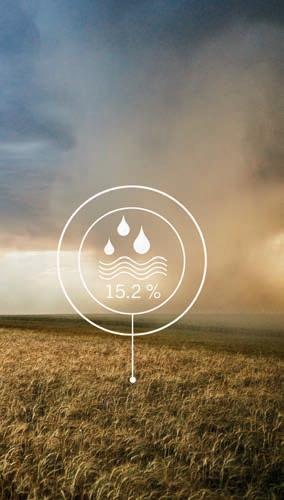
but there is also a risk that unmanned robotic machinery could injure workers or the public accessing farmland. For example, how does the robot distinguish between a 6ft person and a 6ft maize plant, and therefore ensure the safety of the public accessing farm land or a worker in the field? Building into the technology a mechanism to distinguish between a deliberate action and an accident is an area recommended for further development in the Agri-EPI Hackathon industry paper in collaboration with the Hands-Free Farm project (2022).
A ‘responsibility by design’ approach to robotics and automation innovation (Eastwood et al, 2022) has been proposed, which considers the impact on work design, worker wellbeing and safety, alongside the other more traditional impact studies that anticipate the effects on agriculture and agricultural work.
interaction of the farmer with their livestock – a side of livestock farming that benefits many farmers’ mental health and wellbeing.
Swapping risks
NEW TECHNOLOGIES BRING RISKS, BUT THE AGRICULTURAL INDUSTRY WILL CONTINUE TO INNOVATE
It could be argued that human factors (physical and mental health, psychological and social) should be central to the robotics and automation design process.
Livestock health
In the dairy industry, monitoring systems that can identify when a cow comes into heat are already well established. Developing technologies in this area are being used for early identification of ill health, allowing farmers to identify, isolate and treat sick animals in a targeted way, reducing the volume of veterinary medicines required (particularly antibiotics) and ultimately the risk to the consumer – as well as lowering animal handling risks during veterinary treatment.
However, there is an ethical risk here, as such technologies may cause further intensification of livestock farming and create animal welfare issues associated with overcrowding (Schillings et al, 2021). There is also a wellbeing risk owing to the reduced
While history shows us that solving one problem can create others, this will not – and should not – stop the agricultural industry from continuing to identify and introduce innovative solutions. It is always the case that what you gain in one area you can easily lose in another. Safety is no different; new technologies often bring new risks. Some of the technological advances of the last few decades have meant larger machinery and fewer operators, increasing the lone worker risks. High levels of monotony may increase stress following the introduction of automated technologies. There is a need to evaluate these emerging risks and ensure that safety procedures and systems are embedded at the development stage. Recent initiatives in Australia and the UK to develop codes of practice and standards for agricultural robotics aim to identify these key issues and ensure they are addressed in a timely manner through consultation and collaboration with key stakeholder groups.
Long-standing risks in agriculture (such as accidents involving machinery and livestock handling or falls from height) are likely to remain largely unaffected by new technologies, at least in the short term. Innovation will bring only moderate solutions, and new risks may tip the balance against the positive gains.
There is a need to identify the impacts on safety and wellbeing within the early developmental phases of new technologies to ensure that the agricultural industry can take appropriate steps to minimise them.
Petra Martin CFIOSH is group head of health and safety at Origin Enterprises and vice-chair of IOSH
Rural Industries Group
IOSH MAGAZINE 65 IMAGE: GETTY

EVENTS WORKERS

THE SCENES
We explore the safety challenges facing those working in the events and entertainment industry.
The global events industry is worth more than $890bn and is expected to grow to more than $2tn by 2028 (Statista, 2022).
Hundreds of thousands of people flock to large-scale music festivals such as Glastonbury and Coachella every year, looking for a weekend of no-holds-barred entertainment. It’s a high-risk business, with huge numbers of demountable structures, a transient workforce, large crowds, pyrotechnics and unpredictable weather creating a unique



























66 MAY/JUNE 2024 | IOSHMAGAZINE.COM
WORDS EMMA BENNETT
GARRETT TIM ROBERTS
BARRACLOUGH CAROLINE
KIRSTY CARE
SIMON
MARTIN
HARDING
THE BUSINESS SPOTLIGHT ON
environment at each event. And the many people working at them face their own set of hazards. From the stage builders and riggers working at height, to the traffic team putting in long, tiring shifts, the industry’s safety professionals have a lot to consider.
One of the biggest challenges affecting event safety is its temporary nature. Simon Garrett, managing director at X-Venture, an events safety consultancy specialising in exhibitions, says: ‘If you’re loading in and out of a warehouse every day, there’s familiarity. An event is completely different. Each has its own crew loading in tonnes of material in an unfamiliar environment. Everything is happening at the same time; that’s an element of risk no other industry has to deal with.
‘Another challenge is structural safety because you’re creating a whole bunch of demountable structures. Whether it’s tiered seating, tents or exhibition stands, they’re not built to be permanent – this makes them vulnerable.’
The short-term nature of events also increases the potential for general workplace risks like vehicle and pedestrian collisions, says Tim Roberts, a director of consultancy The Event Safety Shop, whose clients range from major music
festivals to international sporting events. ‘This is one of the most frequent and most costly incidents, because at festivals we have to build and dismantle temporary cities without the benefit of segregated roads and pavements, signage or enforcement.’
Don’t look up
Working at height is also a risk – not simply because of the installation of structures and technical systems at height, but because of more widespread risk-taking at lower levels. ‘Professional riggers generally pay close attention to PPE and safe systems of work,’ says Tim. ‘They are really focused on not falling off, and are trained and equipped to do this. Someone clambering on top of a food truck to put up a sign isn’t – it’s an occasional task with untrained staff, zero protection and no plan or supervision. They don’t realise the disastrous outcome a fall from even a couple of metres might have, and are at far greater risk than the guys on the roof.’
The same goes for the sound engineers.
Tim explains: ‘Musicians, sound engineers and people working on stages are more aware of the hazard and make better use of hearing protection. But people who aren’t that familiar – security staff, medics,

A support act for OSH
In 2008, two technicians died when a stage collapsed during preparations for a Madonna concert in Marseille. One of the victims, a 23-year-old Briton, was in Martin Barraclough’s team.
‘Since then there has been a huge move forward in how temporary demountable structures are managed and designed,’ he says. ‘But “what can we learn?” is the wrong question to ask. We need to consider how we are reacting to these learnings. There clearly needs to be changes to improve that outcome.
‘The key for me is the accessibility to competencies within our industry – so better training and more engagement, skills development, mentor schemes and professionalisation.’
67 IOSH MAGAZINE IMAGE: GETTY
welfare people and traders working close to the stage – are unwittingly getting a big dose of noise.’
So what’s the key to mitigating these risks? ‘Risk assessments are the bedrock of everything,’ says Simon. ‘For example, for noise you need a special management plan for workers who are being exposed every single night. And you need to consider site safety at every phase of the event – from construction and the live phase through to takedown.’
The increased use of technology such as lasers and pyrotechnics in the pursuit of increasingly ambitious spectacles also poses a significant fire risk if not managed properly. One expert in this is Martin Barraclough, safety director at ER Productions, the world’s largest special effects and pyrotechnics company.
He says: ‘There’s so much regulatory control over this part of the industry that the main risk isn’t the technology itself, which has got safer over time. It’s a lack of training, ignorance and the creative pressure to deliver on something, even if it’s not safe. It’s our job to teach organisers that it’s actually cheaper to proactively make things safe and train people properly, rather than reactively deal with issues.’
Wellbeing impacts
Gruelling schedules with long hours, international travel and high pressure put those working in the events industry at high risk of exhaustion, burnout and depression. ‘The relationship with drink and drugs in the events business is a long and historic one,’ says Tim. ‘A lot of people get so damaged they have to leave the business, and a few even take their own lives or self-harm as a result of the stresses of the job, exhaustion or substance abuse.’

This psychological safety is such an issue due to the transient nature of the industry – and it disproportionately affects safety
Advice for safety professionals
ety

Simon: ‘Ensure everyone has the correct training, from the management staff to the logistics team and the contractors working on-site.’

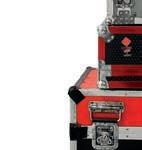
Kirsty: ‘Do a full and formal debrief after every event to identify any near misses and trends to help you learn for the next one.’ Caroline: ‘Know what you know (and what you don’t). When something is outside of your comfort zone, reach out to your network.’
Tim: ‘Have the courage to review, question and start the difficult conversations.’
professionals, says Martin. As freelance or self-employed people, they regularly move between companies and roles, meaning no organisation is responsible for their longterm mental health.
he correct staff to actors rief misses and next one.’ g ach out to w, ons.’
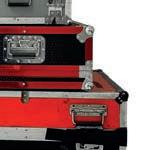

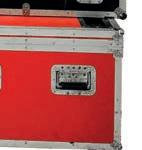

that women face ‘endemic’ misogyny and
Martin explains: ‘We’re a global industry of travellers and that leads to an irregular provision of welfare, depending on your position in the industry and what client you’re working for. It’s up to the stakeholders you’re working for to prioritise psychological safety in their culture.’
PSYCHOLOGICAL SAFETY IS AN ISSUE DUE TO THE TRANSIENT NATURE OF THE INDUSTRY
Tim observes that things have improved dramatically in recent years. ‘There are more welfare and outreach programmes in place,’ he says. ‘We’re having that conversation and more people are willing to discuss when they’re not feeling good.’
However, some people find it easier to speak up than others. A report published in January by the UK government’s Women and Equalities Committee (2024) found
discrimination in the music industry, where sexual harassment and abuse is common and non-reporting of incidents is high. This inequality can create its own set of challenges for women working in OSH roles in the industry.
Caroline Harding, event safety and security consultant and former CEO at Symphotech says: ‘Events can be a very male environment. As a safety lead, you have to be perceived to be credible in your role to get the best outcome with the people you’re working with. If you’re working in a control room as a safety adviser, you need to be listened to – in an emergency, the first 90 seconds are the most critical. But as a female, you can have twice as much work to do to establish that credibility.’
And there’s another set of risks for women working on the ground. ‘Lone working is a challenge, with women being more vulnerable to sexual assault. So there need to be safeguarding plans in place for both visitors and workers.’
Martin agrees: ‘Women have always been in positions of power in our industry, but the fact remains that on the shop floor they
MAY/JUNE 2024 | IOSHMAGAZINE.COM 68 THE BUSINESS SPOTLIGHT
IMAGE: GETTY
are still a minority, and the risks are often higher for females in the workplace.’
The art of planning
Thorough and regular planning is at the heart of every safe event, from ensuring there are enough security staff at the gate to avoid crowd build-up to putting suitable welfare provision in place for all workers.
Kirsty Care, independent event safety consulant and former director of safety operations at Symphotech, explains that this can be a challenge during economically difficult times. ‘People are being selective about what they do,’ she says. ‘One way that organisers try to cut back is by using old, lapsed plans, which exposes every person at the event. For example, extreme weather and changes in climate have really tested old plans. A good safety professional should be consistently and constantly revising them.’

An increase in extreme weather events –from soaring heat to high winds and flooding – are an additional challenge for an industry that regularly operates in the elements. ‘Climate change is very much on the agenda,’ says Tim. ‘We work with an international weather forecaster to get minute-by-minute reports throughout an event so we can be prepared. Depending on where we are in the world, we could be looking at hurricane and tornado policies, or what to do if there’s lightning, heat exposure or flooding.’
Cultural bridges
With events happening all over the world, safety professionals must consider both the laws and the culture of the country they’re operating in. Kirsty, who spent 18 months working in events in Saudi Arabia, says: ‘It’s not just a case of pulling out the tried-andtested methods because what would work in one environment may have unforeseen
impacts in another. Really doing your homework about the local legislation and understanding the culture, religion and different dynamics at play is vital.’
Tim adds: ‘In many territories the written legislation is very enlightened. But how well is it implemented? And are workers being properly protected? While it might not always be possible to impose an international standard, we can put pressure on the supply chain to invest in the correct training, PPE and working conditions. If the local contractors themselves don’t have the budget, organisers should be reaching down to help those suppliers to uplift conditions.
‘It’s about showing people that working safely does not result in massive additional cost. It actually saves money in lost-time accidents and increased insurance claims. For those organisers in it for the long term, an improvement in risk management is one of the best investments they can make.’





Tuesday 10th and Wednesday 11th September 2024


Hotel & Spa, Manchester Road, Knutsford WA16 0SU Drive a conversation by asking brilliant questions. Learn what active listening actually means in practise. Be solution-focused. Be person-centred. Be the one to model collaborative behaviours for your team. IOSH Approved Coaching for safety “Brilliant! Excellent instructor! Fantastic techniques!” Head of SHE Operations, BAE Systems Call now! m. (+44) 0792 191 4099 e. michael@securushealthandsafety.co.uk
Cottons
















EVIDENCE
EXPLORE THE LATEST RESEARCH


TOPIC: Sexual harassment
TITLE: Progress towards ending sexual harassment at work? A comparison of sexual harassment policy in 192 countries
PUBLISHED BY: Journal of Comparative Policy Analysis: Research and Practice
SUMMARY: In 2015, the United Nations member states adopted the Sustainable Development Goals (SDGs), a blueprint for improving economic, social and environmental outcomes in all countries by 2030. SDG 5 calls on countries to eliminate gender discrimination, end gender-based violence and ensure women can access leadership positions. Likewise, SDG 8 urges governments to achieve full and productive employment and decent work for all women and men, including through equal pay and safe working conditions for everyone.
This study examines countries’ progress in achieving these goals and how their laws address workplace sexual harassment. It also measures the pace of change in adopting new legislation since the #MeToo movement, during which time global momentum to address sexual harassment increased. The researchers constructed a database
Hot topics
This edition’s research wrap-up looks into sexual harassment at work and exposure to chemicals.
of legal prohibitions of sexual harassment as of January 2021, which focused on workplacespecific protections, but included non-workplace-related laws. Their analysis found that an additional 13 countries now prohibit sexual harassment. However, in 22% of highincome countries, 26% of middle-income countries and 34% of low-income countries, sexual harassment in the workplace remained legal. The researchers concluded that closing policy gaps and establishing stronger accountability mechanisms around both prohibition and prevention must be a priority, which would help to protect women’s economic opportunities, career trajectories and health.
READ REPORT AT: bit.ly/JCPARP-sexualharrassment-review
TOPIC: Solvents and hazardous chemicals
TITLE: Occupational exposures and cancer risk in commercial laundry and dry cleaning industries: a scoping review
PUBLISHED BY: BMC Public Health
SUMMARY: The laundry and dry cleaning industries can be sources of hazardous chemical exposure for workers. Common solvents like perchloroethylene (PCE) and trichloroethylene (TCE) continue to be used, despite mounting evidence that they are carcinogenic. This study aimed to identify gaps in the literature concerning worker exposure to contemporary toxic chemicals and their carcinogenic risks. A scoping review was conducted involving 12 peer-reviewed papers from 2012 to 2022. It found that 66% examined






PCE exposure, with one notable finding revealing that biomarkers from dry cleaners had significant micronuclei frequency and DNA damage, even when exposed to PCE below occupational exposure limits. Similarly, another study supported these results, finding an increase in early DNA damage among exposed workers. Separate studies on TCE and benzene presented varied exposure levels and health risks, raising concern due to their IARC Group 1 carcinogen classification. Information on alternative solvents was limited, highlighting gaps in health outcome data, exposure guidelines and carcinogenic classifications. The researchers concluded that there was a need to re-evaluate safety limits and suggested that, as alternative solvents like butylal and high-flashpoint hydrocarbons become more prevalent, investigations into the effects of their exposure are necessary to safeguard workers’ health.
READ REPORT AT: bit.ly/BMCsolvents-hazardous-chemicals


MAY/JUNE 2024 | IOSHMAGAZINE.COM
ILLUSTRATION: IKON
70








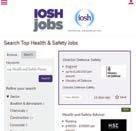


















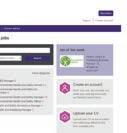


Start your search today The official careers site of IOSH 35,000 registered job seekers Hundreds of jobs every month Connect with qualified OSH professionals with the best vacancies around the globe. ioshjobs.com – the home for health and safety jobs online. Recruit skilled and dedicated safety and health practitioners from assistant to director level to fill any vacancy, or take the next step in your own career by posting your CV or browsing our unrivalled list of vacancies. Start your search today The official careers site of IOSH 35,000 registered job seekers Hundreds of jobs every month Connect with qualified OSH professionals with the best vacancies around the globe. START YOUR SEARCH TODAY The official careers site of IOSH ioshjobs.com @ioshjobs
TITLE
Research: in depth
We take a look at two recent papers to see how their findings can inform OSH.
The midcareer opportunity: meeting the challenges of an ageing workforce
PUBLICATION
OECD iLibrary
BACKGROUND/AIMS
Workers are getting older. Two powerful and persistent trends –longer lifespans and lower birth rates – all but guarantee that midcareer and older workers will make up an even larger portion of the future workforce, with profound implications for our economies, businesses and workers. Are societies adapting quickly enough?
In a bid to find out about the key structural barriers to older workers staying in employment and how we can ensure that age is no longer a barrier to work, the OECD and Generation (a global employment nonprofit network) developed new research. A survey was conducted across thousands of employed and unemployed people and hiring managers in eight countries: the Czech Republic, France, Germany, Romania, Spain, Sweden, the UK and the US.
METHODS AND FINDINGS
The findings presented in the latter part of this report are drawn from a survey commissioned by Generation between 24 February and 7 March 2023. This report adopts specific terms for people of particular cohorts: ‘potential midcareer switchers’; ‘successful midcareer switchers’; unemployed/ underemployed; and hiring managers.
The survey drew 6029 responses from employed and unemployed people and 1510 responses from hiring managers. The research confirms that midcareer and older workers are an asset in the workplace, but their value is consistently underestimated by employers and policy-makers –and by those workers themselves.
To resolve the ‘age-performance paradox’, reduce structural barriers and strengthen the competitiveness of midcareer and older individuals in the job market, all stakeholders need to adapt their job recruitment and application strategies.
CONCLUSIONS
The report makes a number of recommendations. Employers should revise recruiting practices to proactively attract qualified midcareer and older applicants, and adjust screening and interview processes to account for the strengths of these candidates. Midcareer and older individuals should develop and demonstrate in-demand skills by seeking out job-relevant training. Policy-makers need to provide greater information and career guidance for this group of workers, revise labour market regulations and tax policies and facilitate entrepreneurship.
IOSH’S TAKE
Challenges and opportunities relating to an ageing workforce can be addressed through digital skills training, flexible working options, and measuring the job performance and retention of older workers. Hiring managers in the report commented that workers over 45 performed as well as or better than other candidates, yet evidence suggests a continuing bias among employers against older workers.
OSH professionals should at least be conscious of this bias and make reasonable adjustments for older workers wherever possible to advocate for the recruitment of midcareer workers, as well as supporting midcareer workers to help them remain in the workplace.
ILLUSTRATION: ISTOCK
For the
go to bit.ly/ageing-workforce
full report,
THE EVIDENCE DEEP DIVE MAY/JUNE 2024 | IOSHMAGAZINE.COM 72
TITLE
Effects of insomnia on risky driving behaviour among bus drivers: the mediating effect of mental health
PUBLICATION
Accident Analysis & Prevention
BACKGROUND/AIMS
This study explored the effect of insomnia and mental health on bus drivers’ driving behaviour and evaluated the interaction of four variables: insomnia, anxiety, depression and risky driving behaviour.
METHOD AND FINDINGS
The investigation involved 1295 drivers at a bus company in Suzhou, China. Insomnia, anxiety and depression were self-reported based on professional

mental health scales, and risky driving behaviours were measured by the Driver Behaviour Questionnaire. Results revealed that bus drivers aged under 31, drivers with more than 11 years’ experience driving buses, and those with crash and violation involvement within three years demonstrated more severe degrees of insomnia, anxiety, depression and risky driving behaviour, and there were significant positive correlations and interactions among the four variables.
CONCLUSIONS
The findings indicate the importance of regular health examinations of bus drivers and suggest that interventions focused on insomnia and mental health problems may be helpful to reduce risky driving behaviours.



IOSH’S TAKE
Findings from the study here can be useful more widely within the transport sector, and show the need for OSH policies to address these issues. One step might be to take regular assessments and health examinations. The study finds an interaction between insomnia, anxiety, depression and risky driving, which emphasises the need for holistic preventative workplace health strategies that are able to identify early warning signs. This also shows the importance of targeted mental health interventions, which should focus specifically on the risks relating to insomnia.
For the full report, go to bit.ly/bus-drivers-insomnia


With a strong sense of justice and a desire to advocate for workers, Joey began his career while still studying at Otago University in New Zealand: his first job was bringing supermarket workers into First Union. During this time, he suffered a brain injury while playing rugby, spent six weeks in a rehabilitation clinic and sadly was never able to play again.
‘It made me very risk-averse, which is possibly why I’m so drawn to health and safety,’ says Joey.
After graduating, he moved to Perth, Australia, to represent aged care workers, then returned to New Zealand to work with the nurses’ union as an organiser, where he represented members with health and safety issues alongside collective bargaining.
In 2013, he joined the Public Service Association and started to attend health and safety committees for hospital workers.
‘It was incredibly useful to see the data relating to incidents and help make strategies to address problems,’ he says.
Joey found his formal health and safety training invaluable. ‘It really taught me the power of legislation. I started to utilise it to help resolve bullying issues in the workplace, and used it alongside industrial law to help make organisations safer.’
Strength in
UNION
New Zealand-born Joey Bradford CertIOSH has a passion for human rights and has spent much of his career so far representing others.


After a stint in the UK working for Unison, Joey decided to make his passion for advocacy official and returned to New Zealand in 2018 to study a master’s degree in human rights, with a focus on worker and refugee rights. While studying, he also

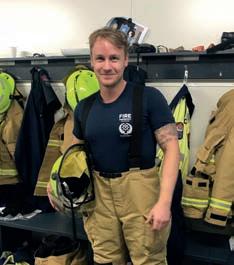
I JOINED THE FUTURE LEADERS GROUP TO SHARE MY UNIQUE PERSPECTIVE OF OHS
volunteered as a firefighter. ‘It was fascinating. Health and safety is paramount to firefighting, and there is a heavy emphasis on not putting people out on duty until they are deemed ready.’
Joey started work at the Community and Public Sector Union in 2021, representing members working for the new COVID-19 response division in the Department of Health.
‘To complement the work, I started studying for a graduate diploma in OSH through Massey University [in New
Zealand]. I loved the course, and it really helped connect the dots between my work and health and safety theory.’
After a move to Canada, working for a union representing grocery store workers, he returned to Australia in February 2024 to work as a OHS officer for the Australian Nursing and Midwifery Federation.
Now Joey is keen to pass his expertise on to the younger generation. ‘I joined the Future Leaders Group to share my unique experience of OHS from a union perspective,’ he explains. ‘The group itself is very diverse and there is an incredible amount of passion, which I hope we can utilise to activate more young people to be involved in the sector. I highly recommend anyone who is interested to engage and participate in this group.’
THE LAST WORD PROOF POSITIVE
MAY/JUNE 2024 | IOSHMAGAZINE.COM 74
WORDS ALEX LACEY
We'll help you reach new heights
The IOSH Level 6 Diploma in OSH Leadership and Management is designed for a new generation of occupational health and safety professionals.
Awarded by IOSH, delivered by IOSH Academy, an IOSH approved study centre. Take your career to the next level? Scan the QR code to learn more.

Search for 'IOSH Academy'
“Easy to navigate and great value.”
“Very good online training, best I have come across so far.”
“Really enjoyable and informative course! Great customer service throughout.”
“Quick and easy to sign up! Self-explanatory course. Great customer service. Would recommend.”
“Course was straightforward, easy access to all presentations, there was always someone the other side of the phone when I needed assistance.”

IOSH, IEMA, RoSPA, IATP, IoH & CPD approved / assured courses
100% online so you can study anywhere
Works on PCs, tablets & smartphones
24/7 access to selfpaced study materials

In-house IEMA & IOSH-approved tutors
Support available 7 days a week
We’re rated 4.8 out of 5 on reviews.co.uk

more
Approved training provider 980
QR
information Approved training centre Approved training provider 980
Scan the
code for



































































































































































































































































 WORDS PETER CRUSH
WORDS PETER CRUSH

























































































